










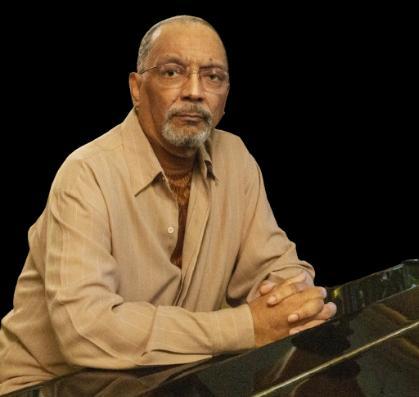






































n less than seven months in office, President Donald J. Trump has wreaked havoc on the poor and disgraced America on his handling of illegally deportations and sending immigrants to the temporary Alligator Alcatraz prison where real alligators serve as guards.



calates.


“Development of this scale at this location would require massive changes to an ecologically delicate landscape, including running huge generators, trucking in massive amounts of food and water and trucking out waste.





“Endangered wildlife, iconic national parks, and Florida s fresh drinking wa-





"It presents an efficient low cost opportunity to build a temporary detention facility because you don t need to invest that much in the perimeter. People get out, there s not much waiting for 'em other than alligators and pythons. Nowhere to go, nowhere to hide, said Florida State Attorney General James Uthmeier.



















Described as the one stop shop for Trump to carry out his national mass deportations, the remote, 39 acre, 5,000 bed facility consists of wire cages. It is located in the Florida Everglades and the Big Cypress Wildlife Management Area.









The prison is opposed by many including the Miccosukee and Seminole Native American Indians who say the prison has a negative impact on their ancestral land.

Also objecting to the prison is the National Parks Association Sun Coast Regional Director, Dr. Melissa Abdo, who called it an Ill conceived plan.







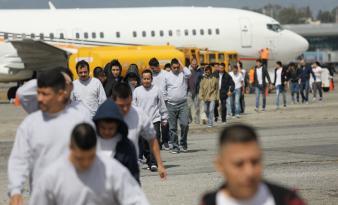











protect the one of kind ecosystem for future generations











Once a political rival, Florida Gov. Ron DeSantis strongly supports the prison boasting, It helps fulfill President Trump s mission, he said referring to the GOP Project 2025.








The U.S. Immigration and Customs Enforcement (ICE) reported that 28,319 immigrants were deported from the U.S. in the first seven weeks of the Trump administration between January 20 to March 11.

This represents an average of 3,887 deportations per week, or about 555 each day. At the end of April, the administration claims it deported 139,000 people.




But deporting immigrants comes with a price to American taxpayers. According to the American Immigration Council, it could cost $88 billion a year to deport one million people a year. The removal of millions of construction, hospitality and agriculture workers could reduce the U.S. gross domestic product by $1.7 trillion, according to a CBS report.









“Building a bare bone tented detention center on hot tarmac in the middle of the Everglades and exposing imprisoned immigrants to the elements is a cruel and absurd proposal. The Everglades intense heat, humidity, and storms can be hazardous without proper precautions, warned Dr Abdo.










This facility s remote, harsh nature could leave people in very real danger, especially as Florida s heat index skyrockets and hurricane season es-





ter supply would be at risk from this illconceived plan. Communities and villages that live in the area, as well as the people detained and working at this facility, could all be at serious risk if the need arose to quickly evacuate from a hurricane, using only a single two lane highway that s currently under construction, stated Dr. Abdo.










While the state and federal government have spent billions to restore the Everglades, Dr Abdo said, Now the government wants to spend millions on this atrocious plan. She urged Trump to abandon the prison plan and









Trump, who is the grandson of an immigrant, suffered another legal setback in his attempts to deport Haitians. A federal judge blocked him from ending the temporary Haitian deportation program. He made that decision after Kristi Noem Department of Homeland Security Secretary said she was rescinding the program which under President Biden would have run through February 3, 2026.








Trump claimed things are better in Haiti and that it s time for them to go back home, but U.S. District Court Judge Brian Cogan in Brooklyn ruled that Noem did not follow instructions •Continue on page 21.
















n the ever shifting theater of global politics, the pursuit of recognition is often as potent as the quest for genuine peace. The recent scene featuring former U.S. President Donald Trump receiving another nomination for the Nobel Peace Prize, this time at the hands of Israeli Prime Minister Benjamin Netanyahu, is emblematic of the high stakes spectacle that surrounds world leaders vying for prominence.







and unmet promises, particularly about trade and the economy. For Netanyahu, the gesture serves as a shield, deflecting attention from political trials and controversies that threaten his own legacy.


Yet, beneath the surface of these grand gestures, the realities faced





















are palpable; more Americans are awakening to the disconnect between campaign promises and lived experience.






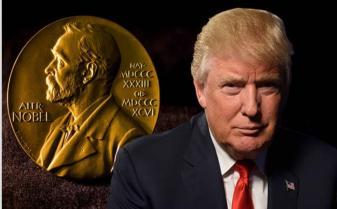
















At a dinner that shimmered with formality and political symbolism, Netanyahu presented Trump with a letter nominating him for the prestigious Nobel accolade. The gesture was, for Trump, both unexpected and flattering: "It's nominating you for the Peace Prize, which is well deserved, and you should get it," Netanyahu announced, bestowing both praise and a calculated nod of camaraderie. The timing was hardly accidental, coming just days after an unprecedented ceasefire between Israel and Iran twelve days of fighting brought to a halt, and a U.S. bombing campaign on Iran s nuclear facilities still echoing in the global consciousness. Such moves are more than mere diplomatic courtesies; they are strategic distractions, deftly deployed in the ongoing "game" of international politics. Both leaders Trump and Netanyahu find themselves at pivotal crossroads. For Trump, the Peace Prize nomination is an opportunity to recast his narrative amid increasing domestic scrutiny





by their nations are far less theatrical. In the United States, voters are weary. The promise of lower prices and economic relief has faded into the background as families grapple with the tangible effects of trade wars. Disappointment and fatigue








In Israel, the political landscape is equally fraught. Netanyahu's maneuvering bestowing honors abroad while navigating legal and political storms at home reflects a leader adept at distraction yet continually pursued by the consequences of his actions.












What appears is a portrait of two leaders, each "waging war for the top spot in dodging what may become imminent," whether that be accountability, electoral defeat, or the inevitable judgment of history. The Nobel Peace Prize, in this context, is more than an award: it becomes a symbol of aspiration, a tool of narrative control, and a final bastion against the encroaching tide of reality.











As the world watches, the spectacle unfolds. Distractions may be the name of the game, but the stakes both personal and national are very real. For Trump and Netanyahu, the pursuit of recognition is intertwined with the struggle to stay relevant, to shape the story, and to remain unbowed in the glare of public scrutiny.







In the end, whether the Nobel Peace Prize is awarded or stays a tantalizing possibility, the actual test for these leaders will not be found in the accolades they collect, but in the enduring impact of their choices on the families and nations they lead.

















here is a longstanding question echoing through history and today: How long will those in power who claim to lead persist in misleading the youth they say they guide? The answer, it appears, is embedded in the core of power structures those authorities that, despite lacking in distinction, share a chilling sameness of purpose. The evil they direct extend beyond race, instead acting as a subtle attack on awareness and critical thinking.















The deliberate attack on education is both subtle and deeply damaging. Leaders who reap benefits from a populace held in unknowing silence have learned that the easiest conquest is one over minds left untrained. A lack of education does not merely perpetuate ignorance; it anesthetizes the youth, making them oblivious to the subtle machines being spun around them. Education, therefore, is not a mere rite of passage or a societal expectation it is rebellion. It is how awareness is cultivated, and awareness, in its blossoming, bestows upon young minds the sacred ability to think, to question, and to choose rationally.








and disenfranchisement have not vanished; they have only changed costumes.


Thus, the authoritative now falls upon parents, mentors, and com-

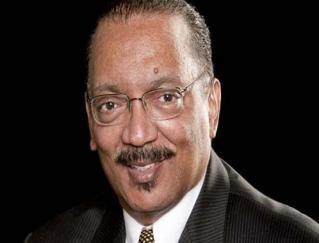














the rooms where minorities sit at the decision making table. The dots of race and economics, when connected, sketch a portrait of exclusion and neglect.
















In this present age, the old games are being played anew. A wariness prevails among some elders, whose memories reach back to the darkness of a time when knowledge was a crime, and Black bodies paid the ultimate price for the audacity of carrying a book. Today, the tactics take on different faces, but the underlying dance stays hauntingly familiar. Racism




munity guides to gather the youth, not only to teach but often to reteach and re awaken. Many young people, through no fault of their own, lack the knowledge necessary to recognize the forces arrayed against them. They drift in a sea of misinformation, unaware that the tides are being manipulated by hands unseen.








But the challenge stays, and the gauntlet is thrown not just to policymakers and teachers, but to the youth themselves. Return to school, not as passive recipients, but as conscious resisters. Defy the odds, for there are those who would rather see you fail who quietly invest in your absence, in your silence, in your surrender to the cradle to prison pipeline. The prison industry waits with open doors for those who fall away from the embrace of education.


















Teach the value of a vote, of civic participation, and skepticism teach that a candidate s appearance is not proof of their allegiance to justice or equity. Encourage youth to look beyond the veneer, to dig deep, and to understand that representation without integrity is a hollow victory. Teach, teach, teach until the lesson is not just memorized but internalized: that proper education is an act of love, a daily labor whose rewards cannot be measured in salaries alone.


For history has shown that it is costlier to incarcerate than to educate, and yet the dollars earmarked for change rarely find their way to









Let that not be your destiny. Let each lesson learned, each day spent in pursuit of knowledge, be a blow against the fortress of oppression. Remember that education is not simply preparation for life; it is the very act of living with dignity, purpose, and vision. The struggle continues, but so does the hope carried onward, ever upward, by those who refuse to be hoodwinked or denied.






We must cease looking to Washington and the White House that our fore parents built, but we must look to building houses that are built by the people who have built this country with their blood, sweat, and tears.






Instead of asking politicians what they will do for us, we should articm esults from those willing to deliver. By Rev. Dr. Harold E. Bailey.




































n the 21st century, the persistence of disparities in the criminal justice system remains one of society s glaring injustices. The unm B


ly to be held accountable with the same severity.









Sentencing Disparities










































compared to other racial groups continues to fuel conversations about systemic bias and inequity. These disparities are evident in arrests, sentencing, incarceration, and broader societal perceptions of crime.


Root Causes of Disparities








One of the most glaring inequities lies in sentencing. Studies have consistently shown that Black individuals often receive harsher sentences than their white counterparts for similar offenses. Accord-








consciously, influencing decisions and outcomes at every stage of the justice process. For Black individuals, implicit bias translates into harsher judgments, an assumption of guilt, and a reduced chance of leniency or rehabilitation focused sentencing.

Impact on Families and Communities

















The systemic inequities in the justice system are deeply entrenched in historical and structural racism. Laws and policies established during eras of overt racial prejudice have left lingering effects, shaping the interactions between communities and law enforcement today. From the era of slavery to Jim Crow and beyond, Black individuals have been disproportionately policed, criminalized, and penalized. These historic practices have influenced modern judicial behaviors, perpetuating a bias against Black people.

Crime and Community Dynamics

































Disparities in the justice system have far reaching consequences for Black families and communities. The over policing of Black neighborhoods leads to increased rates of incarceration, leaving families fractured and communities destabilized. Economic opportunities are further diminished when individuals face barriers to employment due to criminal records. Meanwhile, the lack of accountability for crimes committed by outsiders fosters resentment and erodes trust between Black communities and the justice system.

Steps Toward Reform





























A perception often exists that crime within Black communities is orchestrated by outsiders, yet the justice system rarely reflects this complexity. When individuals from outside the community commit crimes in Black neighborhoods, they often face lighter sentences or escape systemic scrutiny. This unbutes to a broader narrative of neglect and bias against Black communities, as outsiders are less like-







ing to data from the Sentencing Project, Black men are, on average, sentenced to 19.1% longer prison terms than white men for the same crimes. Furthermore, mandatory minimum sentences and threestrike laws disproportionately impact Black individuals, leading to expanded incarceration rates and extended time served.

The Role of Implicit Bias




Addressing these disparities requires systemic changes at multiple levels. Efforts must include:








Judges, juries, and law enforcement personnel bring their own implicit biases into the courtroom. These biases often manifest un-


Legislative Action: Revising sentencing laws and policies to eliminate mandatory minimums and reduce racial disparities.





Training and Education: Implementing bias training for law enforcement, judges, and juries to mitigate the impact of implicit bias.



Community Involvement: Empowering Black communities to play an active role in policymaking and justice Continue on page 7





Continued from page 7.

Data Transparency: Collecting and analyzing racial data on arrests, sentencing, and incarceration to identify patterns and address inequities.



Wrap up










The persistence of disparities in the justice system serves as a stark reminder that equality under the law remains elusive for Black individuals. Recognizing and dismantling these inequities requires not only systemic reform but also societal acknowledgment of the deep rooted biases that perpetuate these injustices. By addressing sentencing disparities, implicit bias, and the unm m mm m oward justice for all.






































umbers released by the Justice Department show a drop in overall youth incarceration rates in the United States. But a closer look at the data shows a widening gap between black and white youth confinement. Criminal justice reform advocates say a heightened police presence in communities of color despite little difference in crime rates between black and white youths is to blame.















































According to the American Civil Liberties Union, the U.S. has only 5 percent of the world's population, but more than 20 percent of the world's prison population. Justice Department data from 2015 shows there has been a 54 percent drop in overall youth incarceration rates since 2001. In 2015, 152 of 100,000 youths were incarcerated in the U.S. a drop from 2001, when 334 of 100,000 youths were behind bars. The DOJ classifies a youth as anyone younger than 21.

















"It's important to realize the placement rate has reduced for all youth," says Josh Rovner, the juvenile justice advocacy associate at The Sentencing Project. "In a way, this is a good news story and I don't want people to lose sight of that."
However, Rovner and other advocates for criminal justice reform are slow to praise the drop in numbers. A closer look reveals a disquieting element of the criminal justice system: a rise in the disparity between black youth incarceration and white youth incarceration.

































The Sentencing Project released a fact sheet analyzing the Justice Department data since the start of the century. In 2001, black children were four times more likely to be incarcerated than white children. But in 2015, black children were five times more likely than white children to be incarcerated.

A look at the numbers shows that in 2015, 86 of 100,000 white children were incarcerated in the United States. The number for black children was five times higher, with 433 of 100,000 behind bars.

But according to Rovner, individual actions are not to blame for a higher incarceration rate of black youths.
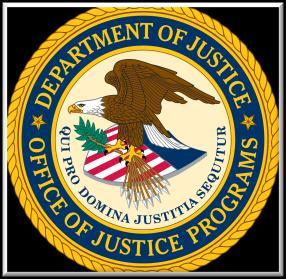


"It's not about the differences in behaviors by youth. It's about the differences in how adults respond to those behaviors," he said.


Every two years, the Centers for Disease Control and Prevention performs a study analyzing youth risk behavior. The CDC looks at youth alcohol use, drug use, behaviors that contribute to violence and others. The results from its 2015 study show black youths are not committing more crimes in proportion to white youths.







There are some slight behavioral differences, the study shows. For example, white youths are more likely to carry weapons, drink alcohol and do harder drugs, while black youths are more likely to get into fights, smoke marijuana and handle drugs on school property.
Rerun: Criminal Justice Collaborative Special Series.
Extensive Assistance and Possibilities
Beyond Punitive Measures in Youth Pol-























ity mayors and councils often resort to punitive strategies to address youth behavior, such as criminalizing public gatherings, enforcing curfews, or issuing fines for minor infractions. While these measures may temporarily reduce visible unrest, they fail to address the systemic roots of disenfranchisement that often lead to such behaviors. These actions are reactive rather than proactive, focusing on suppressing symptoms rather than curing the underlying condition.










Punitive measures risk alienating young individuals further, driving them deeper into despair and systemic neglect. Public shaming, incarceration, or restrictive policies often exacerbate the very issues they aim to solve, such as poverty, unemployment, and lack of access to education. Strict regulation can also foster resentment and mistrust between youth and authorities, creating a cycle of defiance rather than cooperation.


Moreover, a strictly punitive approach lacks constructive alternatives that could channel youthful











energy into something positive and meaningful. It may inadvertently widen the social divide, segregating communities further rather than building bridges of understanding. To create long lasting change, cities must adopt strategies that empower youth rather than penalize them.

What Can Be Done




Investing in Education and Job Training












Breaking cycles of poverty and disenfranchisement begins with equipping young people with the skills and knowledge they need to thrive. Education should go beyond traditional academic subjects to incorporate vocational training, mentorship programs, and apprenticeships. Such initiatives foster stronger connections between schooling and employment, preparing youth for the realities of the job market while instilling a sense of purpose and ambition.








Vocational training introduces students to tangible skills, such as welding, coding, culinary arts, or graphic design fields that may align with their interests and lead to stable careers. Mentorship programs pair young individuals with




experienced professionals who can guide, inspire, and counsel them through challenges, providing realworld insights and encouragement. Apprenticeships integrate learning and work experience, allowing youth to earn while they learn their craft.













Schools must also prioritize inclusive and culturally responsive curricula. Representation matters: when students see their identities, histories, and aspirations reflected in their learning materials, they are more likely to engage and succeed. Developing curiosity and a sense of belonging can reduce dropout rates and empower students to envision brighter futures. Education becomes not just a tool for employment but a means of self discovery and community building.





Creating Safe and Inclusive Spaces











To counteract the alienation many young people face, cities should focus on creating safe, inclusive spaces where they can express themselves freely and constructively. Community centers, youth clubs, and sports facilities can serve as hubs for creativity, learning, and social interaction.











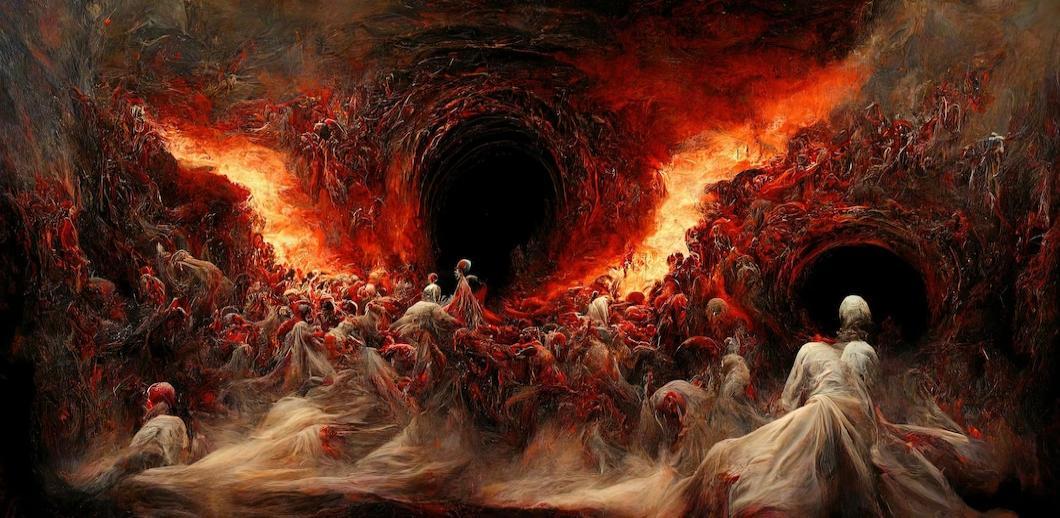

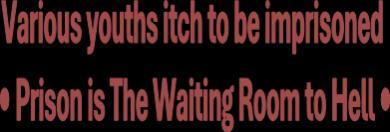
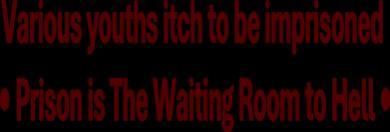

The Necessity of Interpretation
































peaking in tongues, often referred to as glossolalia, is regarded by many in Christian traditions as a divine gift, a manifestation of the Holy Spirit. However, it raises significant questions about its giver, purpose, and the way it is practiced and understood, particularly when interpretations are absent. This theological reflection looks to consider the role of this gift, its potential benefits to the body of Christ, and whether its misuse or lack of interpretation aligns with spiritual principles.

Who Is the Giver of This Gift?






One of the most debated aspects of speaking in tongues is the absence of interpretation. Paul s epistles provide guidance on this matter, particularly in 1 Corinthians 14:27 28, where he advises that if there is no one to interpret, the speaker should remain silent in the church. He emphasizes that the purpose of tongues is not to confuse or alienate, but to communicate divine truths in a manner accessible to all who hear.




















The act of speaking in tongues is firmly rooted in scripture, particularly in the New Testament, where it is described as a spiritual gift bestowed by the Holy Spirit. In 1 Corinthians 12:10, Paul identifies tongues as one of the gifts of the Spirit, alongside prophecy, healing, and discernment. As with all spiritual gifts, it is understood that the Holy Spirit is the giver, empowering individuals to glorify God and edify the church.











However, this gift is not meant to be used randomly or in isolation without purpose. Paul cautions against an unstructured display of spiritual gifts, as they are intended to serve the body of Christ, not merely to highlight individual spirits-





chaos but order a reflection of divine harmony. The Bible urges believers to consider the impact of their spiritual expressions on the collective body of Christ. Acts of worship, including speaking in tongues, should bring unity, understanding, and spiritual growth. When these elements are absent, one must question whether such practices truly please God or fulfill His intent for the church.

The Overshadowing of the Spirit















































Another perspective to consider is the interaction between the individual and the Spirit of God during the act of speaking in tongues. Scripture shows that individuals maintain control over their actions even when moved by the Spirit. In 1 Corinthians 14:32, Paul states, "The spirits of prophets are subject to the control of prophets," suggesting that spiritual gifts should be exercised with discernment and intentionality.



































Spiritual Purpose and Edification
Paul poignantly illustrates this in 1 Corinthians 14:23, saying that if an outsider were to enter a gathering and hear everyone speaking in tongues without interpretation, they might conclude that the group is irrational. This emphasizes the critnot only to avoid misunderstandings but to ensure that the act of speaking in tongues serves its intended spiritual purpose. Without interpretation, the congregation may be left spiritwith the divine message being conveyed.


























The fundamental question remains: what is achieved if a crowd cannot spiritually benefit from speaking in tongues? Paul s teachings consistently advocate for worship that builds up the church. He says, "Let all things be done for edification" (1 Corinthians 14:26).






































tion: if the gift is viewed as divine, how should it be exercised in a way that honors the giver and benefits the congregation?











If speaking in tongues is practiced without interpretation, its purpose is diminished, as it neither enlightens nor strengthens the listeners. God s desire for worship is not


If the Spirit overshadows an individual and moves them to speak in tongues, could this divine intervention still be a blessing to the body of Christ despite the lack of immediate interpretation? While the experience may bring personal spiritual fulfillment to the speaker, its collective impact depends on the response of the congregation and the presence of interpretation. Without a shared understanding, the act may remain isolated, unable to contribute to the broader spiritual life of the church.









Speaking in tongues is undoubtedly a profound and mysterious gift, one that connects believers to the divine in a unique way.








laws. Below are the key points to consider:










Legal Protections and Challenges















often immunities that protect federal entities from certain types of lawsuits.







CE, or Immigration and Customs Enforcement, is a federal agency under the U.S. Department of Homeland Security (DHS). It was set up in 2003 as part of the government s restructuring efforts following the September 11, 2001, terrorist attacks. ICE s primary mission is to enforce immigration laws and investigate cross border crimes such as human trafficking, smuggling, and international crime organizations. The agency is divided into two main components: Enforcement and Removal Operations (ERO) and Homeland Security Investigations (HSI).






Privacy Concerns and Recent Criticism







Fourth Amendment Protections: The Fourth Amendment of the U.S. Constitution protects individuals against unreasonable searches and seizures. If ICE s actions are considered unconstitutional, affect-









Privacy Act of 1974: This act limits how federal agencies can collect, keep, and give personal information. If ICE is found to have violated these provisions, individuals may potentially seek redress. However, the Privacy Act has limitations and does not apply to non U.S. citizens in many cases.




Barriers to Legal Action








Qualified Immunity: ICE officials may be protected by qualified immunity, which shields government officials from liability unless they violated clearly established legal rights.
















Over the years, ICE has faced scrutiny and criticism for its practices, particularly about data collection and surveillance technologies. Reports suggest that ICE has employed various tools to gather personal information, including accessing databases with driver s license records, social media accounts, and utility bill data. Such practices have raised alarms among privacy advocates who argue that these actions often bypass due process and disproportionately affect vulnerable populations.


Can Individuals Press Charges or Sue ICE?








ed individuals may have grounds to challenge those actions in court. However, proving a violation of constitutional rights can be challenging, especially when national security or public safety is cited as a justification.
Federal


The question of whether individuals can sue ICE for privacy violations is complex and depends on several factors, including the nature of the alleged violation and applicable





Lack of Transparency: ICE s surveillance practices often lack transparency, making it difficult for individuals to gather evidence of wrongdoing.







Cost and Resources: Filing a lawsuit against a federal agency requires significant legal ability and financial resources, which can deter affected individuals from pursuing legal action.












Tort Claims Act (FTCA): Under the FTCA, individuals can sue federal agencies for certain wrongful actions. However, suing ICE under this act would require proving specific harm caused by the agency s actions, and there are

While it is theoretically possible for individuals to press charges or sue ICE for privacy violations, the legal landscape is fraught with challenges. Advocacy groups and legal organizations often play a crucial role in holding agencies accountable and pushing for reforms to safeguard privacy rights.








Understanding the scope of ICE s operations and the legal framework in place is essential for addressing these concerns effectively.

















ment are designed to ensure accountability and prevent any one branch from becoming too powerful. However, in the contemporary era, there have been instances where the president of the United















t is noteworthy that in the 21st century, there appear to be instances where the president of the United States may disregard laws and regulations without facing repercussions. It raises questions about the differential consequences that might be encountered by individuals from minority communities engaging in similar behaviors. Furthermore, it is worth examining whether the president could be held accountable for such actions or if they might be overlooked. Additionally, the efficacy of the elected members of Congress warrants scrutiny, especially regarding their capacity to take decisive actions. Can Congress impeach the president concerning the bombing incident without obtaining approval? What are the implications of this scenario?


The mechanisms of checks and balances in the American govern-




of the law. For example, individuals from minority communities might face harsher repercussions for similar actions, highlighting disparities in accountability and justice.












States appears to bypass laws and regulations without facing significant consequences, raising concerns about unequal enforcement









This situation prompts critical questions about presidential accountability. Can a sitting president be held responsible for such actions, or are they often overlooked? Furthermore, it casts doubt on the effectiveness of Congress in exercising its powers, particularly regarding its ability to act decisively when faced with such scenarios. In the case of a bombing incident, would Congress be able to proceed with impeachment without prior authorization, and what would be the broader implications of such a move?






These questions underline the importance of evaluating the checks and balances system to ensure its fairness and effectiveness in upholding democratic principles.

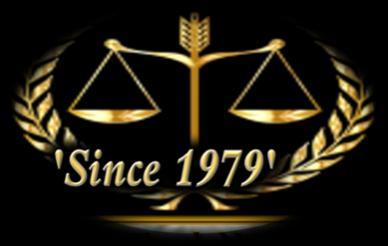




Do
Youth Know About Crime, Consequences, and Conspiracy?










he questions posed about crime, culpability, and societal awareness strike at the very heart of some of the most pressing challenges facing communities today. These concerns reveal a web of cause and effect, often overlooked or ignored, that binds together perpetrators, victims, and the broader society in a cycle that perpetuates harm and profit.



verged. Early intervention and alternative pathways for continued education could serve as a lifeline, redirecting potential energy from destruction to creation, from despair to possibility.



Awareness and Apathy Among Those in Power


It is tempting to believe that policy-




The Economics of Crime: Who Truly Profits?






















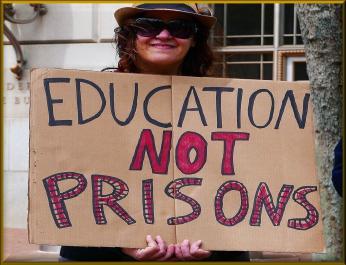

















ized individuals is not just a consequence but a commodity. Prisons are often built in communities far removed from those most affected by crime, populated by individuals who are disproportionately people of color. The economic benefits jobs, revenue, local influence accrue to host communities that may have little understanding of, or empathy for, the lives disrupted by incarceration. The image of a jail bus rolling in from Chicago or another major city is not just transportation; it is a transfer of wealth, power, and hope.


Breaking the Cycle: Toward a New Reality





The landscape of crime, especially in marginalized communities, is colored by the harsh reality that those at the street level often young, disenfranchised individuals receive a pittance for their participation, while those who orchestrate and profit from the distribution of narcotics or weapons often remain at a safe distance, both geographically and demographically. The irony is sharp: the drugs and weapons that poison neighborhoods are often brought in by individuals with little connection to the community itself, yet the destructive consequences settle like dust on the streets where opportunity has been systematically denied. Education, Opportunity, and the Roots of Crime



















What will it take to awaken a nation numbed by routine tragedy and conditioned indifference? Crime affects all communities and stems from broader systemic issues such as inadequate communication, compassion, education, and opportunity. It is a system in which crime pays, yes but seldom for those who risk and lose the most.







There is a persistent correlation between dropping out of school and turning to crime, particularly violent or armed offenses. The question of what grade level most offenders leave the education system is not trivial; it is a window into a moment when hope might have faltered, when the path still di-


makers and elected officials are, at the very least, aware of the statistics and stories that define the lived experiences of communities most affected by crime and incarceration. Yet awareness does not always translate into concern, and concern does not always manifest as action. Too often, the machinery of change moves only when those in positions of privilege or authority are personally touched by tragedy when the abstraction of crime becomes a concrete wound in their own family or social circle.



The Economics of Incarceration



















To break this cycle, there must be a reckoning with the root causes and a collective commitment to change. Communication honest, vulnerable, and persistent across generational, racial, and class lines can begin to unravel the fatalistic narratives that keep harm in motion. Investing in education and opportunity, addressing systemic inequity, and shifting the incentives of entire industries away from profit and toward genuine community well being are essential steps.




The prison industrial complex reveals a chilling truth: in many places, the incarceration of marginal-


President Trump seems interested in the subject prison and diverted from it. We Wonder why?











nderstanding the Challenges and Examining Solutions.








The United States, a nation celebrated for its diversity and resilience, faces a plethora of challenges that shape its societal fabric. Among these, migration, the justice system, crime, and the prevalence of drugs stand out as primary areas of concern. Each of these issues is complex, interconnected, and demands thoughtful consideration and comprehensive solutions.

Migration






Migration has long been a cornerstone of the American story, fueling its growth and enriching its culture. However, it remains at the center of political and social debates. Recent years have seen heightened discussions on immigration policies, border security, and the treatment of migrants.

Key challenges include:







While migration challenges persist, the contributions of immigrants to the nation's economy and innovation underscore the importance of balanced policies that address security concerns while fostering inclusion.

raises questions about systemic racism and the effectiveness of punitive measures.




Justice System












Policing and Accountability: Public trust in law enforcement has eroded due to incidents of police brutality and perceived lack of accountability.



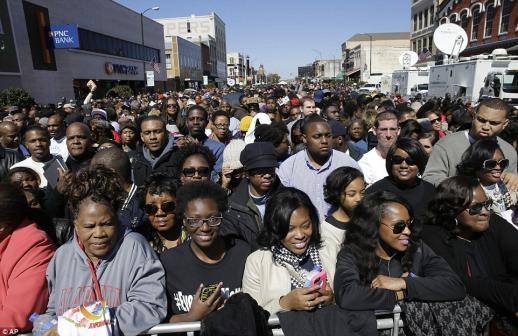




Undocumented Immigration: Millions of individuals reside in the U.S. without legal status. This raises concerns about labor exploitation, access to public services, and national security.






Access to Justice: Many individuals, particularly those from lowincome backgrounds, struggle to obtain competent legal representation, undermining the fairness of








Border Management: Securing the U.S. Mexico border has become a contentious issue, with debates revolving around humane enforcement and the economic implications of border security measures.





The justice system in the U.S. is built on the principles of fairness and equality, yet it faces significant scrutiny. Issues such as mass incarceration, racial bias, and the accessibility of legal representation have sparked widespread debate.

Key challenges include:



Reforming the justice system involves addressing systemic inequalities, investing in communitybased solutions, and promoting rehabilitation over punishment.
Crime








Refugee and Asylum Seekers: The global refugee crisis has strained U.S. systems, evaluating its commitment to international humanitarian principles.










Crime rates and criminal activities have been a persistent concern in the U.S., impacting the safety and well being of communities nationwide. From violent crimes to cybercrime, the complexities of modern criminal activities require adaptive strategies.


Key challenges include:











Mass Incarceration: The U.S. holds the highest incarceration rate globally, with a disproportionate number of people of color affected. This


Gun Violence: The frequency of mass shootings and gun related incidents has sparked debates on gun control and the Second Amendment.





Organized Crime: Gangs and illicit networks continue to pose threats to public safety and disrupt local communities.



Cybercrime: As technology advances, cybercrimes such as identity Continue on page 15.








Continued from page 14. theft, hacking, and ransomware attacks have become increasingly prevalent.





prescription opioids and the rise of fentanyl have led to record overdose deaths, prompting calls for comprehensive healthcare reform.
mains a barrier to addressing substance abuse.









Drug Trafficking: The flow of illegal drugs across borders and



Efforts to curb crime must be multifaceted, incorporating stricter regulations, community engagement, and technological advancements to combat emerging threats.

Drugs









The prevalence of drugs and substance abuse remains a significant public health and safety issue in the United States. The opioid crisis has devastated communities and strained healthcare systems.

Key challenges include:


Opioid Epidemic: The misuse of








within communities perpetuates violence and organized crime.



Combating the drug crisis requires investments in prevention programs, expanding access to treatment, and international collaboration to disrupt trafficking networks.










Addiction Treatment: Limited access to affordable and effective addiction treatment programs re-











Migration, the justice system, crime, and drugs represent some of the most pressing challenges for the United States. Addressing these issues requires collaboration at all levels government, communities, and individuals. By fostering informed debates and implementing sustainable policies, the nation can work towards solutions that uphold its values of equity, justice, and opportunity for all.


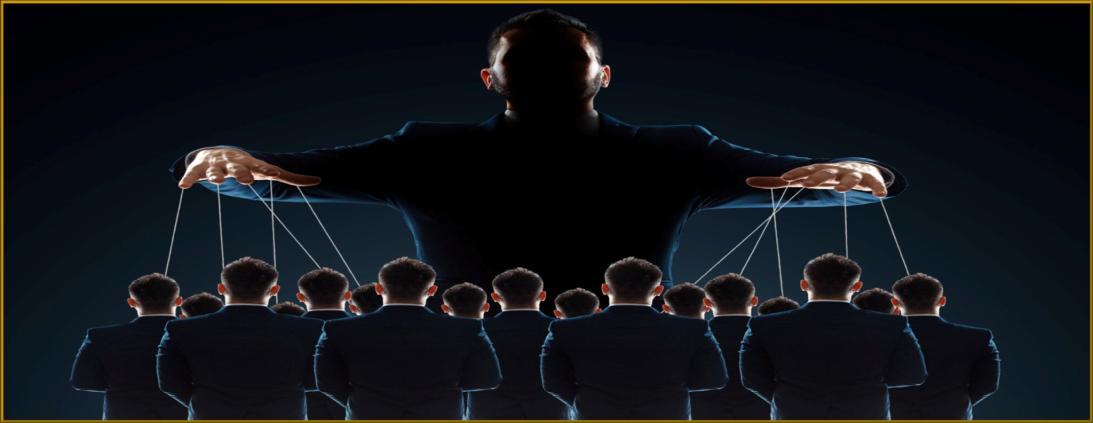

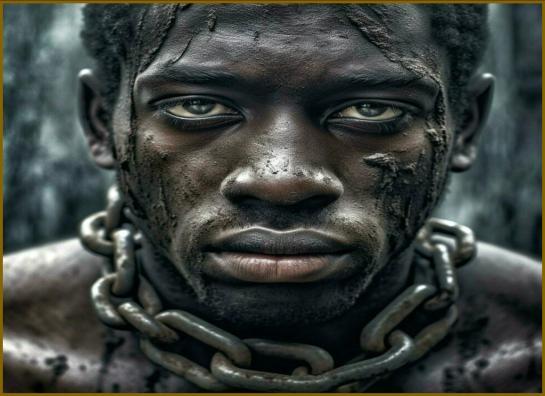


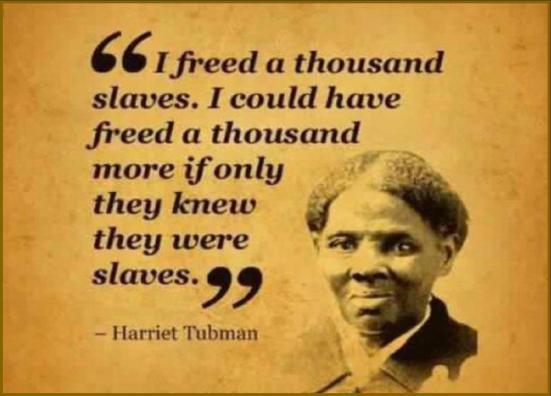



















































ariffs are a form of tax imposed by a government on imported or exported goods. Histortool for several purposes, including protecting domestic industries, raising revenue, and exerting economic pressure on trading partners. While they have been a fundamental aspect of global trade for centuries, their impact on society both positive and negative depends on how they are implemented and whose interests they serve.

The Origin of Tariffs















The concept of tariffs dates to ancient civilizations, when states and empires imposed taxes on goods entering or leaving their territories as a means of income and regulation. In more modern history, tariffs gained prominence during the mercantilist era of the 17th and 18th centuries, when nations sought to maximize exports and minimize imports to accumulate wealth. This approach often led to protectionist policies designed to shield domestic industries from foreign competition.

Tariffs in the Modern Era











in the context of U.S. China relations. These tariffs were presented to protect American industries, reduce trade deficits, and address alleged unfair practices by foreign governments.



Who Benefits from Tariffs?



The beneficiaries of tariffs often depend on the specific sectors and industries targeted by the policy:



Domestic Producers: One primary goal of tariffs is to protect local













In the 20th and 21st centuries, tariffs continued to play a significant role in international trade. For instance, the Smoot Hawley Tariff Act of 1930 in the United States raised duties on numerous imported goods, which many historians believe exacerbated the Great Depression by stifling global trade. More recently, under the Trump administration, tariffs became a focal point in trade policy, particularly


manufacturers by making imported goods more expensive, which can give domestic products a competitive edge in the market. For example, a tariff on steel imports may benefit American steel producers by reducing competition from cheaper foreign steel.





Government Revenue: In countries where tariffs are a significant source of income, the government benefits directly from the revenue collected.



However, tariffs can also have adverse effects on other groups:


Consumers: Tariffs often lead to





higher prices for goods, as importers pass on the cost to buyers. This disproportionately affects lowincome consumers, who spend a larger share of their income on necessities.






Exporters: Retaliatory tariffs imposed by other countries can harm domestic exporters by reducing their competitiveness in foreign markets.

The Socioeconomic Impact

















The claim that the rich get richer while the poor get poorer in the context of tariffs is not unfounded, although the reality is more nuanced. Wealthier individuals and corporations, particularly those with stakes in protected industries, may benefit disproportionately from tariffs. At the same time, the increased cost of goods and potential job losses in affected sectors can exacerbate economic inequality, placing a heavier burden on working class and low income families.














While tariffs have been an integral part of economic policy for centuries, their effects are complex and multifaceted. They can serve as a tool for protecting domestic industries and addressing trade imbalances, but they can also lead to higher consumer prices and strained international relations.








To ensure that tariffs do not widen the gap between the wealthy and the poor, policymakers must carefully consider their design and implementation, balancing the needs of domestic producers with the broader interests of society.




merica, often celebrated as the land of the free and the home of the brave, is a nation whose story is as complex and contradictory as it is inspiring. This land is not simply a blank page upon which new lives are written, nor is it a tapestry without knots or stains. Instead, America is the result of centuries of hope, ambition, heartbreak, and injustice a place shaped by those who arrived with nothing and those who were already here, by those who dreamed and those for whom dreams were trampled. This legacy, both glorious and grievous, calls out for honest reckoning.















was taken first by negotiation under impossible terms, then by outright theft and force. These actions were justified through myths of destiny and supremacy, enshrined in doctrine and song.




Even after centuries, the descendants of the original peoples still bear the scars of these betrayals. Their resilience in the face of this ongoing adversity is a testament to their strength, but it is not a substitute for justice. The story of America cannot be told honestly without acknowledging the cost paid by Native Americans not only in land but in freedom, in culture, and in the right to decide their own destiny.
Myth of Belonging and the Reality of Arrival

There is a persistent myth in America, a comforting illusion, that some families have always belonged here. This myth is told, retold, and internalized until it becomes a part of national identity. But if we pause to reflect, we find that every individual who calls this country home is descended from someone who arrived as a stranger pushed or pulled across oceans and continents by forces of hope, necessity, or desperation. The first Europeans came seeking religious freedom, economic opportunity, or escape from persecution. Later waves brought people fleeing war, famine, and oppression. Others were forced enslaved, shackled, and torn from their homelands.




have faced persecution and hardship for no fault of their own. The legacy of slavery, the internment of Japanese Americans, the exclusion of Chinese immigrants, and forced removal of indigenous peoples these are not distant or abstract events. They are living memories, echoed in the experiences of those whose communities still bear their mark.


The Dangers of Misinformation and the Duty to Tell the Truth





Modern Injustices and the Struggle for Equity

America's story is not only one of the pasts; it is alive in the present. Minority communities, whether descended from enslaved Africans, immigrants from around the world, or the original inhabitants of this land, continue to face challenges both subtle and stark. From discrimination and economic disparity to targeted legislation and systemic exclusion, the struggle for true equality is ongoing.



Yet before all these arrivals, this land was home to hundreds of Native nations, each with its own rich traditions, languages, and spiritual beliefs. Their presence was not fleeting or accidental; it was rooted in centuries of connection to the land, to each other, and to the natural world. When new settlers arrived, the story did not become one of harmonious coexistence, but of violence, broken treaties, and dispossession.




Yet within this struggle there is extraordinary power. Every generation has faced obstacles that seemed insurmountable, and each has found ways to persevere, resist, and claim agency. In our time, the act of voting stands as a battleground where voices can converge to shape a future that might finally reflect the truth of our diversity. Too often, populations are told their voices do not matter that their histories are footnotes, their struggles invisible. But the power of collective action, especially in the voting booth, cannot be underestimated.


The Enduring Pain of Deception and Dispossession




History is not a fixed narrative, but a living conversation. If we allow the story to be written only by the prejudiced, or if we ignore the voices of the marginalized, misinformation will become fact. Lies will echo through generations, shaping the selfimage of a nation and the expectations of its children. In this century, our task is to set the record straight with humility, honesty, and a willingness to face discomfort.


This means recognizing that most Americans are not indigenous to this land. Their ancestors came from elsewhere. This is not a cause for shame; it is a call for empathy. We are all guests on borrowed land, and our responsibility is not to apologize on behalf of others, but to recognize, honor, and repair what has been done. It is a call to action: to acknowledge the past, to support those who stay vulnerable, and to ensure that future generations inherit not a lie, but the truth.


A Rejection of Exclusion and a Plea for Unity




Gratitude, Remembrance, and Responsibility


There are those, both in the past and present, who propagate the idea that America belongs only to certain people that those of color should return to their source, as if home were a matter of blood or skin. Such ideas are not only ignorant; they are profoundly un American.









It is tempting to frame America s founding as the result of armed conquest or bold vision. But the truth is less romantic and far more troubling. The tragedy of Native Americans was not, in the main, the result of fair battle, but of cunning deception, deliberate displacement, and overwhelming outside force. Land was not simply won; it

Many of us carry deep gratitude for the opportunities this country has offered: the chance to escape sorrow, to begin anew, to seek joy beyond grief. Gratitude, however, should not blind us to injustice. It is not enough to be thankful for what we have, while ignoring the suffering of others, especially when that suffering is a direct consequence of policies or actions from which we benefit. Sincere gratitude recognizes that our own fortune is often tied to the misfortune of others.

We must remember those who, even here,

















To sing God Bless America with sincerity is to do so with eyes open to both the blessings and the burdens of our history. How can we claim love for the divine if we hate or exclude the siblings we see every day? Hypocrisy is the enemy of progress; only by embracing the hard core truth, however uncomfortable can we hope to build a better future.































Chicago IL:, the vibrant metropolis known for its architectural grandeur, cultural richness, and historic significance, has long been a focal point for discussions surrounding urban crime. Recent statements from city officials, including the Mayor Johnson, declare that crime rates are on the decline. However, amidst this optimistic declaration, there persists a palpable sense of unease among residents and visitors alike, as street crime appears to mount in various neighborhoods. This paradox invites a deeper exploration into the complexities of crime reporting, public feeling, and the realities of urban safety.




Crime Statistics: A Beacon of Progress?















capture the granular reality of crime as experienced on the streets. A drop in certain categories does not necessarily equate to an overall sense of safety for the city's inhabitants. For example, crimes such as petty theft, carjackings, and muggings, which may not always garner the same attention in official reports, continue to trouble many neighborhoods.


The Geography of Street Crime.










focal points for street crime. Many residents recount experiences of being targeted in busy transit hubs, parks, and even bustling commercial streets. These occurrences, though sometimes categorized as minor offenses, accumulate to create a pervasive atmosphere of vulnerability, especially for those who rely on public spaces for their daily activities.

The Role of Perception and Media.



The Mayor of Chicago has emphasized a significant reduction in overall crime rates as part of the city s progress narrative. According to official data released by law enforcement agencies, categories such as homicide, burglary, and violent assaults have shown measurable decreases over the past year. These figures are often attributed to dedicated policing efforts, community engagement programs, and investments in socioeconomic initiatives aimed at tackling root causes of criminal behavior.




Yet, while these statistics present a promising picture, they often do not
Street crime in Chicago does not affect all areas equally. The city s sprawling landscape features a















tapestry of neighborhoods, each with its own unique dynamics.




While affluent districts might show low crime rates, deprived areas often grapple with higher instances of street level offenses.







This disparity underscores the importance of addressing structural inequalities that contribute to the persistence of crime.


Public spaces, too, have become









Belief plays a significant role in shaping the narrative of crime in Chicago. Even with reported declines, a single high profile incident or series of events can dominate headlines, often overshadowing broader statistical trends. The media s portrayal of crime, with its tendency to highlight sensational stories, fuels anxiety among residents, creating a disconnect between the official narrative and public sentiment.









Social media compounds this issue, as it provides a platform for individuals to share their personal encounters with crime in real time. These firsthand accounts, often unfiltered and emotionally charged, contribute to a feeling that crime is pervasive, even if official data suggests otherwise.





Community Impact and Public Trust.








The difference between reported statistics and lived experiences can erode public trust in city leadership and law enforcement. Residents may view official statements about declining crime rates with skepticism, feeling that their concerns Continue on page 19.



Continued from page 18.






and daily realities are being overlooked. This mistrust, in turn, hampers efforts to foster collaboration between communities and authorities in the fight against crime.










driven approach complemented by qualitative insights can bridge the gap between numbers and lived experiences.



Chicago, A City in Transition








Furthermore, policymakers must prioritize investments in community development, education, and employment opportunities, which serve as long term deterrents to







Conversely, community led initiatives have appeared as a powerful force in addressing street crime. Grassroots organizations and neighborhood watch programs have stepped in to fill the gaps left by traditional policing, offering residents a sense of agency and solidarity. These efforts highlight the importance of involving local communities in creating effective solutions to urban safety challenges.


Balancing Optimism with Trans-
parency.


















Chicago's story of crime and safety is far from static. It is a city in transition, grappling with the complexities of urban life while striving to forge a path toward progress. While the Mayor s declaration of declining crime rates is a testament to efforts made, the mounting street crime serves as a reminder that challenges persist. Navigating this nuanced terrain requires not only bold leadership but also a commitment to listening to and addressing the concerns of its residents.







To reconcile the plain contradiction between declining crime rates and mounting street crime, transparency is key. City officials and law enforcement must provide a nuanced explanation of the data, acknowledge the limitations of statistical reporting while address the concerns of residents. A data-

















crime. By addressing the root causes of street crime, Chicago can move beyond reactive measures and embrace an initiative taking strategy for urban safety.






The contradiction between reported crime statistics and the reality of street crime in Chicago paints a picture of a city caught between triumph and tribulation. It is a call for greater transparency, community engagement, and holistic approaches to urban safety. As Chicago continues its journey, its ability to harmonize statistical progress with the lived experiences of its people will decide the strength and resilience of this great city.









he decision for a nation to enter a war is one of profound consequences, shaping its destiny both domestically and internationally. As America finds itself on the verge of potential conflict with adversaries against whom it holds no legitimate grievances, it is imperative to closely examine the implications of such an undertaking, particularly when societal dynamics and leadership experiences are brought into focus.


Questioning the Legitimacy of the Conflict







vice members alike.

The Societal Impact on Marginalized Communities







War inherently demands justification rooted in legitimate grievances or national security threats. Entering a conflict in the absence of these critical factors risks undermining the moral and ethical stance of a nation. Historically, America has faced scrutiny when venturing into battles that lacked clear justification, often eroding public trust and global credibility. The importance of ensuring transparent, well grounded motives cannot be overstated as the nation contemplates its stance.



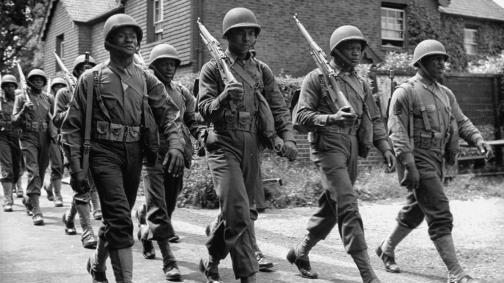
Leadership Dynamics and National Experience





Historically, marginalized groups, including minority communities, have borne disproportionate burdens during times of war. With limited educational opportunities and economic mobility, these communities often become the first to answer the call for service. Assigned primarily to the infantry, they find themselves at the forefront of battle, facing the highest risks and casualties. These dynamic underscores systemic inequities that persist even in the context of national defense, prompting critical reflection on the fairness of conscription and deployment practices.


A Call for Prudence


The uncertainty surrounding the rationale and outcomes of a potential conflict further complicates the decision making process. War, by its nature, introduces far more questions than answers, encompassing human, economic, and geopolitical costs. When clear objectives and strategies are absent, the risks magnify, threatening to destabilize the nation and its resources.




A recurring concern in the discourse on war is the leadership's firsthand military experience or the lack thereof. Those steering the country toward war often do so without the lived realities of serving in the armed forces, raising questions about their understanding of the sacrifices demanded. The president, acting as commanderin-chief, embodies this paradox when their personal history lacks direct engagement in battle. This disconnect can create a perception of detachment from the gravity of wartime decisions, fostering apprehension among citizens and ser-


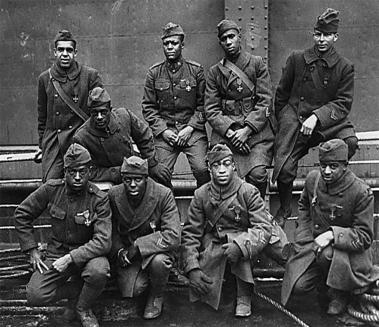

America's approach to war must be guided by principles of legitimacy, equity, and strategic clarity. It is incumbent upon leaders to ensure that decisions carry the weight of thoughtful deliberation and are informed by the experiences of those who will bear the consequences.

As the nation stands on the precipice of potential conflict, it must weigh the moral and practical implications with the utmost care, recognizing that the path of war is fraught with challenges that extend beyond the battlefield.



Continued from page 3.
or the timeline mandated by Congress. He also said plaintiffs proved their lives would be in danger if they are deported to gang-infested Haiti.
Trump’s aggressive ICE agents have brought about a number of lawsuits because of their snatching up people on the streets wearing
Black masks arresting many who didn’t have a criminal background like Kilmar Abrego Garcia whom Trump wrongfully deported to El Salvador despite his having a protective order barring his deportation.
Trump is paying El Salvador $6 million for detaining Venezuelan gang members. A judge has forced Trump, who admitted he made a mistake in deporting Garcia, and demanded his return to the U.S which he reluctantly did but then had him incarcerated with new charges. Garcia denied being a member of the Venezuelan gang.
Rolling out his anti-civil rights movement agenda, Trump received pushback from Blacks when he issued an executive order banning the Diversity Equity Initiative program and removed the records of Black military heroes including Milton Lee Olive, III, 18, a cousin to this writer.
On October 22, 1965, Olive spotted a live grenade during a search-anddestroy mission in Vietnam, placed the device on his stomach allowing it to explode. He saved the lives of four comrades.
Skipper, as my family called him, was the first Black to receive a Medal of Honor during the Vietnam War. His military file has been erased from federal websites. Ironically, Trump is a five times draft dodger.
Trump forced some universities and law firms to drop their DEI program while other universities sued him for
withholding federal funds for similar programs and opposed Trump’s demands to not enroll anymore foreign students.
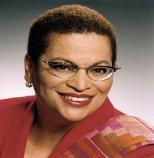

Dr. Julianne Malveaux, an African American economist and author, said President Trump will never erase Black history and asked African Americans to refer to the White House as the House that the enslaved built.
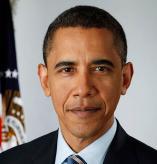

Trump has issued another executive order revoking President Barrak Obama’s DEI initiative to promote diversity and inclusion in the management of national parks and other public lands.
Trump’s order calls for charging nonU.S. residents higher fees when visiting national parks and recreation passes.
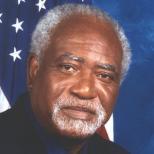

Besides deporting immigrants and trying to take away gained civil rights, Trump, in getting his “Big Beautiful Bill Act” passed, has created a national health crisis by including Medicaid cuts in his tax bill while giving a $4.5 trillion tax break to the wealthiest people who helped finance his campaign.
But in carrying out his infamous Project 2025 Republican agenda, he is also creating chaos and confusion among the poor and middleclass with the passage of his “Big Beautiful Bill Act” that cuts social service programs like Medicaid and the Affordable Care Act (better known as Obama Care) marketplace funding that will cause nearly 12 million people to lose their
health insurance.
This Act, as Rep. Danny K. Davis (D -7th) recently said during press conferences in front of five different safety-net hospitals, will cause these facilities to close as well as nursing homes that that also depend on Medicaid funding. “Cuts to Medicare and Medicaid pose a grave threat to patient safety and the overall stability of our healthcare system,” said Davis.
“These programs are the financial backbone for many hospitals especially those serving underserved and vulnerable populations.”
There will be a trickledown effect of passing this bill which Davis calls,
“The Big Ugly Bill,” like creating severe staff shortages including physicians and frontline staff which will jeopardize timely and quality healthcare. It will also affect local businesses.
Hospitals in low-income and rural areas will close and mortality rates will rise as patients lose access to essential services that save lives, warned Davis who is also a professional healthcare official.
“Health care is a right, not a privilege,” said Nicole L. “Nikki” Harvey, Davis’s director of Health where she, Elder James Moody, clergy coalitions, Rev. Paul Jakes, assistant to Davis, medical staff and others attended a drive-by press conference in front of five different safety-net hospitals calling on the Senate to reject Trump’s tax bill that robs the poor and gives a $4.5 trillion tax break to the wealthy and if extended $4.7 trillion. “Health is wealth,” said Harvey.
Davis’s all-day warnings were dashed the next day when on Wednesday, July 4th, the House passed the bill with a 218-214 vote with Representatives Thomas Massie (R-KY) and Brian Fitzpatrick (R-PA) voting against the legislation. Continue on page 24.








and even responses to the pandemic can all contribute to such trends.












It is essential to approach crime statistics with a clear lens, examin-
















eadership, particularly when it occupies one of the highest offices in any nation, is under constant scrutiny. It is an intricate dance between public promises, enacted policies, and the shifting sentiments of an electorate. The administration of Donald Trump has been no exception, sparking heated debates across spectrums about the efficacy, honesty, and long term implications of his time in office. As with any leader, understanding the nuances of his tenure requires unpacking the narratives, the numbers, and the societal responses that have unfolded.


An Examination of Escalating Crime Rates






One of the most pointed critiques of the Trump administration has been the alleged rise in crime rates during his tenure. While it is true that crime statistics fluctuated









Some argue that policies such as tariffs on imported goods during Trump's presidency contributed to cost increases, particularly in industries reliant on international trade. Others contend that the economic effects of the pandemic, which began during his term, played a significant role in altering market conditions. The intersection of policy, global events, and economic outcomes is complex, making it difficult to pinpoint singular causes.

Promises and Public Perception.










ing whether upticks in certain areas stem from systemic issues or policy decisions made on a national scale. Critics argue that divisive rhetoric from leadership may embolden certain behaviors, yet others may point to state and municipal governance as the more direct influencers of crime rates. The conversation remains layered and often politically charged.


The Economic Landscape: Rising Costs of Essentials








The cost of living is a kitchen table issue for most families, and the Trump administration faced its share of economic challenges.
















across various regions of the United States, attributing such changes solely to a president requires a nuanced understanding of causation versus correlation. Local policies, law enforcement funding, societal conditions such as unemployment,




Critics highlight the rising prices of food, gas, and household items, which affected the financial stability of many Americans. These increases, however, must be viewed within the broader context of global economic dynamics, including trade policies, international supply chain disruptions, and inflationary pressures that are not necessarily tied to one administration.








Campaign promises are a cornerstone of any election, serving as a blueprint for what candidates aim to achieve. For Donald Trump, promises such as improving relations with Russia, reducing crime, and revitalizing various sectors of the economy were central to his platform. Critics argue that many of






Continue on page 23.


Continued from page 22.






these promises went unfulfilled, leading to a growing sentiment of disillusionment among voters.

















For instance, the commitment to resolve international conflicts, such as tensions with Russia, was seen as overly ambitious by many geopolitical analysts. While the intention to bring about peace and stability is commendable, the complexities of international diplomacy often render such promises challenging to keep. The perception of unkept promises can erode trust, feeding narratives of dishonesty and ineffectiveness.
ability to unite a nation during moments of significance. Critics have pointed to certain events, such as commemorations of military anniversaries, as lacking the dignity and respect expected of such occasions. Public ceremonies, particm m-







of truth and transparency in leadership. The proliferation of misinformation whether intentional or unintentional can have ripple effects, influencing public behavior and trust in institutions.






The Polarizing Nature of Leadership













































































One of the more contentious aspects of Trump's presidency was the release of incarcerated individm pproach to criminal justice reform. While some viewed these actions as steps toward rectifying systemic injustices, others criticized them as insufficient or strategically motivated. The issue underscores the deeply polarizing nature of his leadership, where nearly every decision was met with both fervent support and vocal opposition.








This polarization was also evident in how Trump communicated with the public. His use of social media and direct, often unfiltered rhetoric galvanized his base while alienating others. Such communication strategies can engender both loyalty and criticism, amplifying divides within the electorate.

The Role of Leadership in Na-

tional Events



Leadership is measured not only by policy decisions but also by the




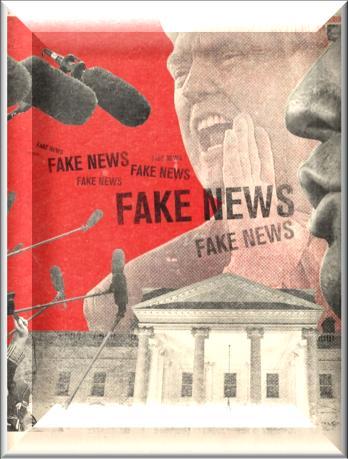




bers, hold symbolic importance, and mishandling them can have profound effects on national morale.











The perception that "everything he touches falls apart" is a reflection of the frustrations of those dissatisfied with Trump's leadership style and outcomes. However, it is important to balance such critiques with an assessment of the broader context, including systemic issues and external factors beyond one individual's control.


The Dangers of Misinformation






The accusation of dishonesty or being a "compulsive liar" is a serious one, especially when applied to a figure in a position of power. It underscores the critical importance



Some argue that blind allegiance to any leader, especially in the face of demonstrable falsehoods, poses risks not just to individuals but to society as a whole. The concept of "false pride" mentioned by critics highlights the danger of prioritizing loyalty over critical thinking. Ensuring an informed electorate is essential for the health of any democracy.

Lessons Moving Forward













As the nation reflects on the Trump administration, it is clear that his presidency has left an indelible mark. Whether viewed through the lens of policy, public perception, or societal outcomes, the debates surrounding his leadership are unlikely to fade soon. The lessons learned from this era should inform future leaders about the importance of accountability, effective communication, and the balance between ambition and practicality. Leadership is a complex and multifaceted responsibility.



While no leader can be all things to all people, the ability to inspire unity, deliver on promises, and act with integrity remains paramount.






As the nation continues to navigate its path forward, the Trump presidency serves as both a case study and a catalyst for ongoing conversations about the qualities and actions that define effective leadership.


Rev. Dr. Harold E. Bailey, President Probation Challenge PCC Network.


Continued from page 21.
Davis, other Democrats and the Greater Chicago Food Depository officials were outraged over the cuts to the Supplemental Nutrition Assistance Program (SNAP) that now shifts costs to the states.
“We are gravely concerned about the impact this legislation will have on our neighbors in the one in five households across Chicago and Cook County experiencing food insecurity. By shifting burdensome program costs to states and adding stipulations that make it more difficult for people to qualify and continue receiving SNAP benefits, the new bill weakens a program that, to date, has been our nation’s most vital anti-hunger program,” Greater Chicago Food Depository officials said in a statement.
“It feels especially cruel that this bill is being passed at a time when neighbors are already coping with elevated food prices and living costs, and when food banks like the Greater Chicago Food Depository and our partners are serving record numbers of guests.
“Our experience tells us that lines at pantries will get exponentially longer and an unconscionable number of our neighbors – including children, seniors and veterans – will go hungry. This need was avoidable. This hunger was a deliberate decision.”
According to the Center on Budget and Policy Priorities, the SNAP program, “is the most effective anti-hunger program. It plays a critical role in reducing poverty, improving health and econom-



ic outcomes, supporting people who are paid low wages, and serving as the first line of defense against hunger during economic downturns.”
In Illinois, there are 1,935,600 people on the SNAP program or 15 percent 1 in 7 in the program.
More than 60 percent of SNAP family participants are in families with children and more than 33 percent are with members who are older adults or are disabled. More than 36 percent are in working families and nationally more

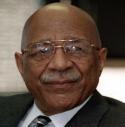






than 62 percent of SNAP paretic pants are in families with children.
More than 37 percent are in families with members who are older adults or are disabled and more than 38 percent are in working families. Most SNAP participants in Illinois have incomes below the poverty line.
Each SNAP member per household receives $192 per month which equates to $6.33 for each household member per day.
For FY 2024, the SNAP program brought $4,469,341,818 to Illinois with 12.4 percent of Illinois experiencing food insecurity and high food prices. In a 215-214 vote the House passed HJ.R. 1 making parolees ineligible for taxpayer benefits like state Medicaid, SNAP, Obamacare tax credits, and higher education benefits. We all know what some people will do when they can’t work and have money for food and other necessities. This will increase the prison rates.
But while Republicans willingly cut the SNAP food program and Medicaid, they approved a $1.01 trillion defense budget for FY2026 an increase of 13.4 percent from FY 2025. It includes $848.3 billion for the discretionary budget and $113.3 billion for mandatory funding through congressional funding. There is $5 billion for border security as well.
To use an analogy of the late Illinois Appellate Court Justice R. Eugene Pincham always said, “It is clear as a goat’s tail going up a mountain at high noon” that Trump prefers funding bombs over bread for the poor.
Rep. Davis said the next fight will take national unity for the upcoming 2026 elections when he and many other Democrats hope they will flip enough seats to regain control of both chambers and begin the awesome task of taking back “the soul of America” Trump is tearing civil rights gains program-by-program especially civil rights legislation won during the 1960’s.






Ketanji Brown Jackson has served on the Supreme Court for under two years. The 52 year old has recently made headlines for her fiery and completely unusual approach to her role. 'Profoundly dangerous,' 'unchecked arbitrary power,' 'existential threat.' These are some of the intense phrases Jackson has used to oppose rulings by her colleagues, many of which involve Donald Trump's executive powers.










As the court's most junior justice, Jackson is











expected to be cautious and respectful; however, in the last term, she issued more dissenting opinions than any other justice, totaling twentyfour. Her dissents are frequent, often featuring strong language and partisan criticism of her






Republican-appointed colleagues. Now, Jackson seems to have crossed a line, as Amy Coney Barrett, known for her restraint, publicly criticized Jackson over her dissent in Trump v. CASA, related to the president s birthright citizenship order.





Prayers and thanks go out to Justice Ketanji Brown Jackson, who has the spiritual strength to stand against the odds and fight in a battle that is fueled by principalities and spiritual wickedness in high places.





























communicating with the dead has fascinated humanity for centuries, with beliefs and practices surrounding it appearing across various cultures and religions. The Bible, a foundational text for Christians, offers explicit guidance on this matter and provides examples of how such practices were perceived in biblical times. This exploration seeks to understand what the Bible says about communicating with the dead, the reasons some claim to have succeeded in such communication while others cannot, and why this topic often arises within religious discourse, particularly in churches.




What Does the Bible Say About Communicating with the Dead?












advises, "Do not turn to mediums or seek out spiritists, for you will be defiled by them. I am the Lord your God." These passages demonstrate that such practices were clearly forbidden and viewed as contrary to the worship of God.




away from God, ultimately leading to his demise.








Why Do Some Claim to Communicate with the Dead While Others Cannot?















cating with the dead often arises in religious contexts because it touches upon fundamental questions about life, death, and the afterlife. Churches provide a space for individuals to explore these topics through the lens of faith, seeking reassurance and guidance.









From a theological perspective, many Christian traditions interpret these prohibitions as stemming from the belief that God alone has authority over life and death. Seeking to communicate with the dead is seen as an act of rebellion or mistrust in God s sovereignty.









Examples from Biblical Times






























The Bible explicitly addresses the practice of attempting to communicate with the dead, categorizing it as something to be avoided. In the Old Testament, the book of Deuteronomy strongly warns against engaging in necromancy or consulting mediums. Deuteronomy 18:10 12 states:



















"Let no one be found among you who sacrifices their son or daughter in the fire, who practices divination or sorcery, interprets omens, engages in witchcraft, casts spells, or who is a medium or spiritist or who consults the dead. Anyone who does these things is detestable to the Lord."


Similarly, Leviticus 19:31




















While the Bible condemns communicating with the dead, it also recounts instances where the practice is mentioned. One of the most notable examples is the story of King Saul consulting the Witch of Endor, found in 1 Samuel 28. In this narrative, Saul, seeking guidance before a critical battle, asks the witch to summon the prophet Samuel, who had died. The spirit of Samuel appears and delivers a prophecy of Saul s downfall.











The question of why some individuals claim to succeed in communicating with the dead while others cannot is complex, often blending psychological, spiritual, and cultural explanations. From a biblical standpoint, many Christians believe that any perceived communication with the dead is either a deception or the work of malevolent spiritual forces. In 2 Corinthians 11:14, Paul warns, "And no wonder, for Satan himself masquerades as an angel of light." This passage is often cited to caution against trusting such experiences, suggesting that they may not originate from the deceased but rather from spirits intent on misleading the living.







Moreover, for Christians, this subject is closely tied to the doctrine of resurrection and the hope of eternal life. The Bible teaches that the dead remain in a state of rest until the final judgment, as seen in passages like Ecclesiastes 9:5, which states, "For the living know that they will die, but the dead know nothing; they have no further reward, and even their name is forgotten." This perspective contrasts sharply with the idea of ongoing interaction between the living and the dead, making it a topic of theological importance.


































This incident is significant because it not only demonstrates that such practices existed but also underscores the consequences of disobeying God s commands. Saul s consultation with the witch is depicted as an act of desperation and a turning


Psychologically, grief and the human desire for closure may lead some to interpret certain experiences such as dreams, visions, or unexplained events as evidence of communication with their departed loved ones. These interpretations are deeply personal and often shaped by cultural and religious beliefs.





Why Is This Subject Discussed More Within the Church?

The discussion of communi-




The Bible s teachings on communicating with the dead reflect a broader theological framework emphasizing trust in God and the rejection of practices seen as contrary to divine principles. While this topic continues to intrigue and divide opinions, the Bible offers both warnings against and examples of such practices, making it a subject of enduring relevance in religious discourse.









For those exploring these themes within the church, the discussion often serves as a reminder of the ultimate hope and promise of resurrection, a cornerstone of Christian faith.





Historical Context of Immigration






mmigration has always been a foundational element of the American story, shaping its social, economic, and cultural fabric. It is important to remember that the Indigenous peoples of this land, often referred to as Native Americans, were the only nonimmigrant population, having lived on these lands for thousands of years before European settlers arrived. The legacy of their displacement and marginalization is a sober reminder of the complexities surrounding immigration and settlement.


From the arrival of European settlers to the present day, waves of immigrants from diverse regions of the world have contributed to the nation's growth and identity. Early settlers faced numerous challenges, including harsh conditions, unfamiliar territories, and limited resources. Similarly, modern immigrants often confront difficulties such as language barriers, economic struggles, and cultural adaptation. These shared experiences highlight the resilience and determination of those seeking a better life in America.




Racial and Socio economic Dimensions



The perception and reception of immigrants in America have often been influenced by racial and socio economic factors. Historically, there has been a preference for immigrants from certain regions, particularly Europe, who were perceived as more "desirable" due to cultural or racial biases. This perspec-




tive is rooted in long standing systemic inequities that have privileged whiteness and marginalized communities of color.


Addressing Modern Immigration Narratives


In cities like Chicago, these dynamics have played out in tangible ways. During the waves of European immigration




in the 19th and early 20th centuries, Irish, Italian, Polish, and other European communities settled in various neighborhoods, often creating enclaves that reflected their cultural heritage. While some groups were able to amass wealth and influence over time, others faced discrimination and economic challenges.


The narrative surrounding immigration today continues to be shaped by racial and economic considerations. Discussions about who "deserves" to immigrate to America often reflect underlying biases, with some advocating for policies that favor certain groups over others. It is crucial to challenge these biases and recognize the contributions of immigrants from all backgrounds.




The idea that immigrants of color are less financially capable or bring fewer resources is a harmful stereotype that ignores the diverse realities of immigrant communities. Many immigrants, regardless of their racial or ethnic background, bring valuable skills, cultural richness, and entrepreneurial spirit that contribute significantly to the nation's development.

Moving Toward Inclusion







For African American and other minority communities, migration to cities like Chicago during the Great Migration was often met with systemic barriers. Redlining, discriminatory housing practices, and limited access to economic opportunities resulted in the concentration of minorities in less affluent areas, such as the South and West Sides of the city. These neighborhoods were often underfunded and lacked adequate resources, perpetuating cycles of poverty and inequality.





As we reflect on the history of immigration in America, it is essential to approach the conversation with empathy and an understanding of the shared struggles that unite us. Immigration is not a zero sum game; it is a dynamic process that enriches the nation's diversity and fosters innovation.







By addressing systemic inequities and fostering inclusive policies, we can create a society where everyone regardless of their origin, race, or economic status could thrive. In doing so, we honor the legacy of those who came before us while paving the way for a more equitable future.






A Complex Landscape of Accountability and Safety robation departments across the country are grappling with significant challenges involving both their staff and the clients they serve. This multifaceted issue spans concerns about officer safety, departmental policies, client behavior, and the broader systemic expectations placed upon the probation system. At the heart of this matter lies a precarious balance between maintaining order and ensuring fairness, all while navigating an environment fraught with complications.



•Officer Safety and Youth Behavior











An alarming trend reported by probation departments is the increase in violent incidents involving youth and probation officers. Some youths have been allowed to assault their officers with little or no consequences, raising questions about accountability and the protective measures in place for staff. For probation officers, this situation creates a dangerous working environment, where the expectation to serve and rehabilitate can come at the expense of personal safety.




play where officers are expected to prioritize their duties even at great personal risk, yet are penalized for making decisions to protect themselves.




Disparate Policies on Firearms






The policies surrounding firearms within probation departments are another point of contention. While some departments permit their officers to carry firearms for self-defense, others strictly forbid even the mention of guns. This inconsistency highlights a broader issue of how probation departments approach safety and risk management. For officers working in departments where firearms are taboo, the absence of protective measures can exacerbate the dangers they face.



Systemic Strain and Day to Day Challenges




Probation officers work in environments characterized by daily turmoil and systemic strain. The lack of uniform policies, coupled with the disparities in accountm








































Seeking Solutions



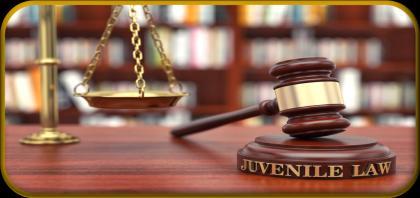















difficult for officers to perform their duties effectively. This strain not only affects their morale but also undermines the mission of probation departments to rehabilitate and guide individuals toward better life choices.





Addressing these challenges requires a comprehensive approach that prioritizes the safety and wellbeing of probation officers while maintaining the integrity of the rehabilitation process. Potential solutions could include:


Establishing clear and consistent policies on accountability for youth behavior.



Standardizing safety measures across departments, including the responsible use of firearms, where ap-

Catch 22 Situations




Probation officers often find themselves in impossible situations, navigating between conflicting demands. Refusing assignments with high risk youth to ensure personal safety has, in some cases, led to suspensions or even the threat of termination. These punitive measures further illustrate the complex dynamics at



Creating support systems for officers facing high risk assignments, such as counseling services and peer support networks.

Encouraging collaboration between departments to share best practices and develop innovative strategies.

The challenges faced by probation officers and departments are complex and deeply rooted in systemic issues. While the current landscape may seem overwhelming, fostering dialogue and implementing thoughtful reforms can pave the way for a safer, more effective probation system.


By prioritizing the needs of both officers and clients, the probation system can better fulfill its mission of rehabilitation and accountability, while ensuring the safety and dignity of those who serve within it.



hicago, IL: Urban environments often serve as hubs of culture, commerce, and community; however, they are not without challenges. Crime statistics, often used as indicators of city safety and progress, may not always align with the lived experiences of residents, particularly in areas where certain types of crime remain prevalent. This discrepancy is vividly illustrated in cities where reports tout overall decreases in crime but fail to address persistent issues that disproportionately affect specific neighborhoods.


The Discrepancy Between Statistics and Reality

on proximity to crime hotspots, the visibility of illicit activities, and the responsiveness of law enforcement. Anecdotes and community feedback play a crucial role in understanding these dynamics, shedding light on areas where additional intervention may be necessary.

Solutions to Bridging the Gap


Addressing the disparity between reported crime statistics and lived experiences requires a multifaceted approach:

Targeted Policing: Law enforcement can deploy resources more strategically in neighborhoods where specific crimes are concentrated, ensuring a visible presence and timely intervention.









When a mayor announces a decrease in crime rates, residents understandably hope that their daily lives will reflect these improvements. However, for those living in neighborhoods plagued by drive by shootings, visible drug dealing, and other forms of violence, the positive narrative may seem distant, if not entirely disconnected from their reality. For these individuals, safety concerns are not abstract they permeate daily routines, shaping how and when they engage with their surroundings.

Impact on Vulnerable Populations


The elderly are among the most affected by urban crime. Tasks as mundane as traveling to the grocery store or visiting a currency exchange can become daunting in areas where fear of crime lingers. For older individuals, the risk of encountering dangerous situations may lead to social isolation, physical inactivity, and economic hardship due to reduced access to essential services. A society that does not



Community Engagement: Creating forums for residents to voice their concerns can help inform policy decisions and build trust between the community and law enforcement agen-

Support Services: Programs aimed at assisting vulnerable populations, such as the elderly, should include transportation options, access to safe public spaces, and community watch initiatives.


Transparency in Reporting: Crime statistics should be contextualized with qualitative data to offer a more comprehensive picture of safety across different neighborhoods. While statistical decreases in crime are commendable, they must be paired with efforts to understand and address the specific realities of residents in affected areas. Ensuring that every individual regardless of age or location feels









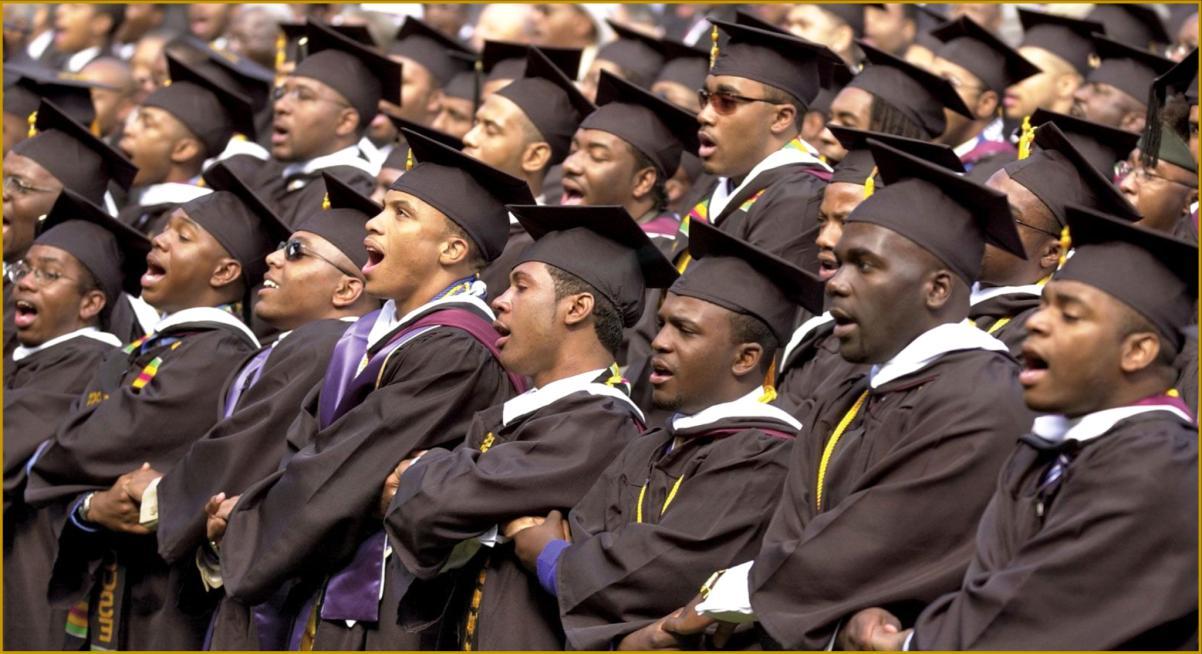

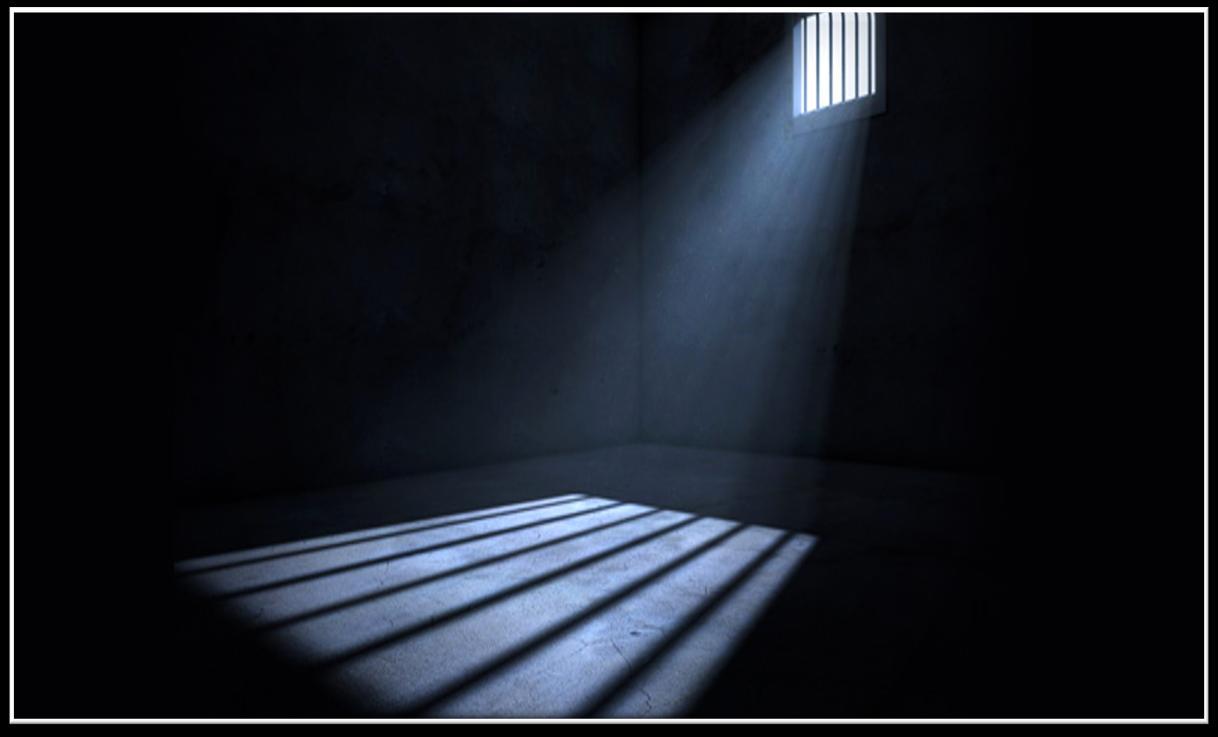







orship, as an integral part of spiritual life, has evolved across centuries, taking on diverse expressions shaped by culture, tradition, and individual interpretations of scripture. In modern times, church practices in many congregations have stirred a mix of admiration and critique, sparking important questions about the essence of worship and its alignment with spiritual intentions.


The Noise of Worship: Celebrating or Performing









tradition rich in cultural significance and personal expression. However, these stylish accessories can unintentionally obstruct visibility for those seated behind, particularly when paired with dynamic acts of worship, such as dancing. While these tradi-



mised. The loudness, spectacle, and clear focus on outward expressions may overshadow the quiet space necessary for introspection, personal prayer, and connection with God.


While communal worship is vital, keeping a balance between energetic celebration and reverent meditation is crucial. Each believer brings unique preferences and needs to the spiritual table, and the church must try to address them all.


The Offering: A Question of Value








A noticeable trend in contemporary worship settings is the focus on vibrant, high energy expressions, often marked by shouting, spirited singing, and dramatic gestures. While this aligns with the scriptural call to make a joyful noise unto the Lord (Psalm 100:1), some question whether the line between genuine spiritual expression and theatrical performance has become blurred.








tions bring vibrancy and color to the atmosphere, they also spark discussions about inclusivity and attentiveness to the communal nature of worship.











For many, such exuberance symbolizes freedom in worship, recalling the uninhibited praise of biblical figures like David, who danced before the Lord with abandon (2 Samuel 6:1422). However, others view these displays as competitive, where the focus shifts to who can be the loudest, the most expressive, or the most captivating. This raises concerns about whether worship has transitioned from a collective celebration of faith to an individual showcase of outward zeal.


Tradition and Distraction: The Brimmed Hats and Dance Floors



Another striking feature of modern church gatherings is the adornment of wide brimmed hats by women a



Dancing, much like speaking in tongues, holds profound spiritual meaning for many believers. It symbolizes joy, thanksgiving, and connection to the divine. When performed with sincerity, it mirrors the biblical example of David s uninhibited praise. Yet, when perceived as a weekly contest of who can dance better or louder, its intended spiritual impact may diminish under competitive undertones.
The financial aspects of modern worship also raise questions. Offerings and tithes, historically intended for the church's upkeep and charitable work, can sometimes feel disconnected from the spiritual experience, especially when the atmosphere feels more theatrical than sacred. This highlights the importance of transparency and purpose in the use of church funds, ensuring contributions genuinely serve the community and God's kingdom.



Balancing Tradition, Expression, and Spirituality








Church as a Place for Reflection and the Word









Contemporary church practices highlight varied worship styles, influenced by history and culture. While vibrant displays of faith can inspire and uplift, they must coexist harmoniously with quieter, contemplative practices that allow individuals to seek personal communion with the divine.
















Historically, the church has served as a sanctuary for meditation, quiet reflection, and the delivery of a transformative message the word of the Lord. However, the shift toward a theatrical atmosphere has led some believers to question if the core purpose of gathering has been compro-
As worship evolves, revisiting the heart of its purpose bringing people closer to God and fostering a collective spirit of faith becomes essential. Whether through jubilant celebration or silent meditation, the church stays a place where believers seek connection, guidance, and renewal. In doing so, it must strive to balance tradition, expression, and spirituality, ensuring it remains a sanctuary for all.















he complexities of modern Christian living often pose profound questions about faith, leadership, and the influence of worldly systems on spiritual practices. As communities navigate the dynamics between scriptural authority and societal pressures, the emphasis stays on discernment, steadfastness, and faithfulness to Christ.


Evangelicals and Scriptural Leadership





















Christ? True believers understand that walking with Christ may require solitude, as worldly acceptance is not the goal. As Scripture warns, the fruits of the enemy are often cloaked in appealing facades but lead to spiritual impoverishment.

Knowing Them by Their Fruits



Discernment stays a key tool for Christians to navigate the tactics of




one exchange for their soul? The pursuit of worldly gains, whether wealth, power, or acceptance, often proves transient and unsatisfying in the face of eternal truths.


The Way of the Cross








In the realm of Christian lifestyles, the roles of Evangelicals and baptized believers in Christ are often scrutinized. Evangelicals, known for their vocal engagement in religious and social matters, sometimes appear to lead public perceptions of Christianity. However, the true essence of Christian life lies not in societal influence but in unwavering obedience to the Scriptures. The baptized believers in Christ those whose lives are anchored in His teachings continue to find direction from the Word of God, standing apart from trends that may prioritize cultural conform-






















Anchoring oneself in Christ often needs walking alone, a path that reflects the way of the cross. This journey, though solitary at times, is marked by moments of profound connection with other steadfast believers. Together, they embody the resilience and hope found in Christ s promise, carrying the light of faith through life's darkest trials.


Living as Anchored Believers

































The Challenge of Worldly Influence








The modern world, characterized by mixed signals and competing ideologies, often challenges believers to discern truth amidst deception. While institutions, including governments, may set frameworks for societal norms, the question arises: Are these directives compatible with the teachings of



the adversary. The Bible teaches that believers will recognize others by their fruits, as an apple tree cannot bear figs. This principle underscores the importance of examining actions and lives rather than mere appearances. Faithfulness to Christ demands vigilance and the courage to stand firm when faced with compromise or moral ambiguity.

The Cost of Compromise










To stand firm in a world rife with distractions and deceit, believers must cling to the Scriptures and the example of Christ. By cultivating lives that bear good fruit love, kindness, self control, and wisdom they offer a living testimony to the transformative power of faith. As the Word reminds us, gaining the world is meaningless if it comes at the cost of one's soul.

Faithfulness Amidst Adversity







True Christian living is not defined by societal trends or external pressures but by an intimate, steadfast relationship with Christ and His Word.




Judas Iscariot serves as a stark reminder of the consequences of spiritual betrayal. For thirty pieces of silver an amount of fleeting value he exchanged his soul, facing a devastating outcome. These narrative prompts individuals to consider their own lives: What would










The path may be lonely, but it is one of righteousness, grace, and eternal hope. As believers discern the fruits of those around them and navigate the tactics of the enemy, they are called to remain anchored in Christ, walking the road less traveled with courage and conviction.





place as a Gospel legend.


ospel music has always been a pillar of spiritual encouragement and cultural expression, and its resonance has persisted through generations. Despite challenges in music trends and societal influences, many Gospel artists have stood the test of time, their songs still played on the radio today, uplifting souls and delivering messages of hope and redemption.







Top Gospel Artists Still Played on the Radio.







Mahalia Jackson Known as the "Queen of Gospel," her powerful voice and heartfelt delivery remain unmatched.





Yolanda Adams Her smooth vocals and empowering lyrics remain a radio favorite.







style bridge traditional and contemporary Gospel admirably.











Fred Hammond A master of blending worship and contemporary sounds, Hammond's music is still widely celebrated.


Mavis Staples A legendary figure whose Gospel rooted sound continues to inspire across genres.

The Challenges Gospel Music Faces Today



Andrae Crouch His groundbreaking compositions and messages of grace influenced Gospel music globally.













Hezekiah Walker Renowned for choir driven songs that inspire congregations and individuals alike.




While Gospel music maintains its spiritual and cultural significance, it has faced challenges in gaining mainstream recognition, especially among younger audiences. The shift in societal influences, often driven by secular trends, has impacted its presence on the airwaves.



James Cleveland Fondly remembered as the "King of Gospel Music," his contributions are played worldwide.




The Winans This family group s melodic harmonies and impactful lyrics continue to inspire listeners.











Mary, Mary Their vibrant sound and relatable lyrics resonate with both young and older audiences.






Kirk Franklin A trailblazer in contemporary Gospel, Franklin s uplifting anthems are staples on Gospel radio stations.







Shirley Caesar With decades of ministry and music, she is beloved as the "First Lady of Gospel."




Richard Smallwood His compositions, blending classical and Gospel elements, are timeless treasures.









Donnie McClurkin Known for charttopping hits like "Stand," his music continues to touch hearts.





CeCe Winans Her soulful voice and inspirational songs have solidified her






Be Be Winans As part of the iconic Winans family, Be Be continues to bring heartfelt messages through song.











Tasha Cobbs Leonard Her powerful worship ballads have made her a contemporary Gospel icon.





Many youths have been swayed by the streets and secular music, which often prioritizes entertainment over substance. Messages in some genres can sometimes reflect pretentious narratives designed for commercial success rather than the uplifting truths Gospel music offers. However, Gospel music stays steadfast in its purpose to share the good news of Jesus Christ and to provide comfort and hope.




Edwin Hawkins Best known for "Oh Happy Day," Hawkins music is still foundational in Gospel history.







Tramaine Hawkins Her soulful voice and uplifting songs are timeless classics in Gospel airplay.












The Clark Sisters Their impeccable harmonies and dynamic performances are treasures of Gospel music.




Rance Allen His unique voice and




The Strength in Gospel's Message. Gospel music of yesterday and today embodies a timeless truth that transcends trends and circumstances. It stirs the soul, lifts the spirit, and reminds listeners of the transformative power of faith. The enduring influence of artists like those mentioned above is a testament to the beauty and strength of Gospel music. Through their voices and messages, the Gospel Good News continues to be celebrated and shared, inspiring generations to come.




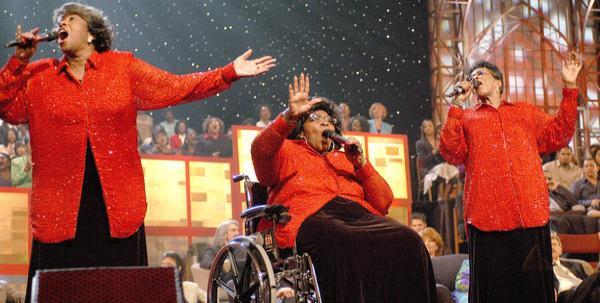





genre was being preserved.


spreading the message of Christ.


The
Fusion of Genres








Today, gospel music is no longer confined to its traditional boundaries. It borrows from blues, jazz, hip hop, and

Challenges in Maintaining the Gospel Message


The Roots of Gospel Music



ospel music has always been a deeply rooted expression of faith, culture, and community. Emerging from the heart of spiritual upliftment, this genre has traversed a remarkable journey from the goldenage of gospel preaching to its modern adaptations. In this 21st century, amidst the whirlwinds of modernization and genre fusion, one crucial question arises: is the gospel message of Christ being diluted in the maze of change?




Gospel music is firmly anchored in African American spirituals and hymns, born out of the struggles and resilience of enslaved communities in the United States. It served as a beacon of hope, a means of worship, and a collective cry for liberation. The golden age of gospel music, spanning the early to mid 20th century, witnessed pioneers like Mahalia Jackson, whose powerful voice defined gospel for several decades. Jackson's performances were not just musical; they were spiritual awakenings, a testament to unwavering faith.




Shifts in Style: Traditional to Contemporary






As gospel evolved, it began to embrace diverse forms of expression. From solo performers like Mahalia Jackson, the genre expanded to include gospel groups such as The Staple Singers and The Soul Stirrers. These groups enriched the harmonies and brought a communal essence to the music. Over time, traditional gospel gave way to contemporary styles. Artists like Kirk Franklin and Yolanda Adams introduced modern production techniques, infused elements of R&B, and appealed to younger audiences. While this shift expanded the reach of gospel music, it also raised concerns about whether the spiritual core of the


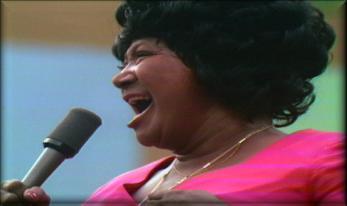



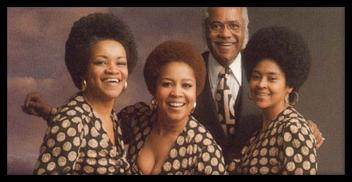
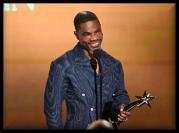










even electronic music, creating subgenres like rap gospel and popgospel. This fusion reflects the dynamism of faith within a rapidly changing cultural landscape. Artists such as Lecrae have successfully bridged the gap between gospel and rap, delivering messages of faith through rhythms that resonate with contemporary listeners. However, this blending of styles has brought forth debates about the authenticity of gospel music and its ability to retain its original purpose








The question remains: has gospel music lost its spiritual essence amidst the modern maze? While the genre s adaptability has ensured its survival and relevance, critics argue that the overt commercialization and genreblending may obscure the gospel message. Lyrics that once carried profound theological truths now risk being overshadowed by catchy hooks and chart topping beats. Yet, many artists continue to prioritize the message of Christ, maintaining integrity while embracing modernization.





What s Next for Gospel Music?







As gospel music continues to evolve, its future lies in finding a delicate balance between innovation and tradition. The genre must embrace change while safeguarding its spiritual foundation. Modern technology offers unique opportunities for gospel artists to reach global audiences, making the message of Christ accessible across cultures and generations. At the same time, a conscious effort must be made to ensure that gospel music remains more than just entertainment it must continue to inspire, comfort, and uplift.


Gospel music, in its essence, is a living testament to faith and resilience.





From the golden age dominated by icons like Mahalia Jackson to the everexpanding horizons of rap and contemporary gospel, the genre s journey reflects the dynamic interplay between tradition and innovation. As we ponder its future, one thing remains certain: gospel music must navigate its path with intentionality, ensuring that the timeless message of Christ shines through the evolving melodies and rhythms. The maze of modernization may be intricate, but the heart of gospel music rests in its unwavering commitment to its spiritual roots.













but of violence, broken treaties, and dispossession.








merica, often celebrated as the land of the free and the home of the brave, is a nation whose story is as complex and contradictory as it is inspiring. This land is not simply a blank page upon which new lives are written, nor is it a tapestry without knots or stains. Instead, America is the result of centuries of hope, ambition, heartbreak, and injustice a place shaped by those who arrived with nothing and those who were already here, by those who dreamed and those for whom dreams were trampled. This legacy, both glorious and grievous, calls out for honest reckoning.


Myth of Belonging and the Reality of Arrival






The Enduring Pain of Deception and Dispossession






There is a persistent myth in America, a comforting illusion, that some families have always belonged here. This myth is told, retold, and internalized until it becomes a part of national identity. But if we pause to reflect, we find that every individual who calls this country home is descended from someone who arrived as a stranger pushed or pulled across oceans and continents by forces of hope, necessity, or desperation. The first Europeans came seeking religious freedom, economic opportunity, or escape from persecution. Later waves brought people fleeing war, famine, and oppression. Others were forced enslaved, shackled, and torn from their homelands.




It is tempting to frame America s founding as the result of armed conquest or bold vision. But the truth is less romantic and far more troubling. The tragedy of Native Americans was not, in the main, the result of fair battle, but of cunning deception, deliberate displacement, and overwhelming




outside force. Land was not simply won; it was taken first by negotiation under impossible terms, then by outright theft and force. These actions were justified through myths of destiny and supremacy, enshrined in doctrine and song.





Yet before all these arrivals, this land was home to hundreds of Native nations, each with its own rich traditions, languages, and spiritual beliefs. Their presence was not fleeting or accidental; it was rooted in centuries of connection to the land, to each other, and to the natural world. When new settlers arrived, the story did not become one of harmonious coexistence,






itants of this land, continue to face challenges both subtle and stark. From discrimination and economic disparity to targeted legislation and systemic exclusion, the struggle for true equality is ongoing.






Yet within this struggle there is extraordinary power. Every generation has faced obstacles that seemed insurmountable, and each has found ways to persevere, resist, and claim agency. In our time, the act of voting stands as a battleground where voices can converge to shape a future that might finally reflect the truth of our diversity. Too often, populations are told their voices do not matter that their histories are footnotes, their struggles invisible. But the power of collective action, especially in the voting booth, cannot be underestimated.

Gratitude, Remembrance, and Responsibility



Even after centuries, the descendants of the original peoples still bear the scars of these betrayals. Their resilience in the face of this ongoing adversity is a testament to their strength, but it is not a substitute for justice. The story of America cannot be told honestly without acknowledging the cost paid by Native Americans not only in land but in freedom, in culture, and in the right to decide their own destiny.





Modern Injustices and the Struggle for Equity

America's story is not only one of the pasts; it is alive in the present. Minority communities, whether descended from enslaved Africans, immigrants from around the world, or the original inhab-
Many of us carry deep gratitude for the opportunities this country has offered: the chance to escape sorrow, to begin anew, to seek joy beyond grief. Gratitude, however, should not blind us to injustice. It is not enough to be thankful for what we have, while ignoring the suffering of others, especially when that suffering is a direct consequence of policies or actions from which we benefit. Sincere gratitude recognizes that our own fortune is often tied to the misfortune of others.






Continue on page 35.



We must remember those who, even here, have faced persecution and hardship for no fault of their own. The legacy of slavery, the internment of Japanese Americans, the exclusion of Chinese immigrants, and forced removal of indigenous peoples these are not distant or abstract events. They are living memories, echoed in the experiences of those whose communities still bear their mark.

Continued from page 34.
The Dangers of Misinformation and the Duty to Tell the Truth
History is not a fixed narrative, but a living conversation. If we allow the story to be written only by the prejudiced, or if we ignore the voices of the marginalized, misinformation will become fact. Lies will echo through generations, shaping the self-image of a nation and the expectations of its children.
In this century, our task is to set the record straight with humility, honesty, and a willingness to face discomfort.
This means recognizing that most Americans are not indigenous to this land. Their ancestors came from elsewhere. This is not a cause for shame; it is a call for empathy. We are all guests on borrowed land, and our responsibility is not to apologize on behalf of others, but to recognize, honor, and repair what has been done. It is a call to action: to acknowledge the past, to support those who stay vulnerable, and to ensure that future generations inherit not a lie, but the truth.
A Rejection of Exclusion and a Plea for Unity
There are those, both in the past and present, who propagate the idea that America belongs only to certain people that those of color should “return to their source,” as if home were a matter of blood or skin. Such ideas are not only ignorant; they are profoundly

un-American. The true legacy of this nation is not ownership, but aspiration. America is not a land given finally to any one people, but a project unfinished, ever-evolving, and open to all who would strive for justice and dignity.
To sing “God Bless America” with sincerity is to do so with eyes open to both the blessings and the burdens of
the divine if we hate or exclude the siblings we see every day? Hypocrisy is the enemy of progress; only by embracing the hard-core truth, however uncomfortable can we hope to build a better future.
A Call to Begin Again
If we wish to leave our children a legacy worthy of pride, we must start anew not by erasing or denying the past, but by confronting it with courage and compassion. Let us listen to those who have been silent. Let us lift the stories that have been buried. Let us act not from guilt, but from a sense of justice that is rooted in humility and love.
America’s legacy is not fixed; it is what we make of it. The responsibility of this moment is clear: to remember the truth, to speak it, and to act upon it. Only then can we hope that, when the next generation looks back, they will see not just the deceit, but the honesty that began to heal it. May we be the God-fearing people bold enough to tell the truth, brave enough to acknowledge our shared responsibility,

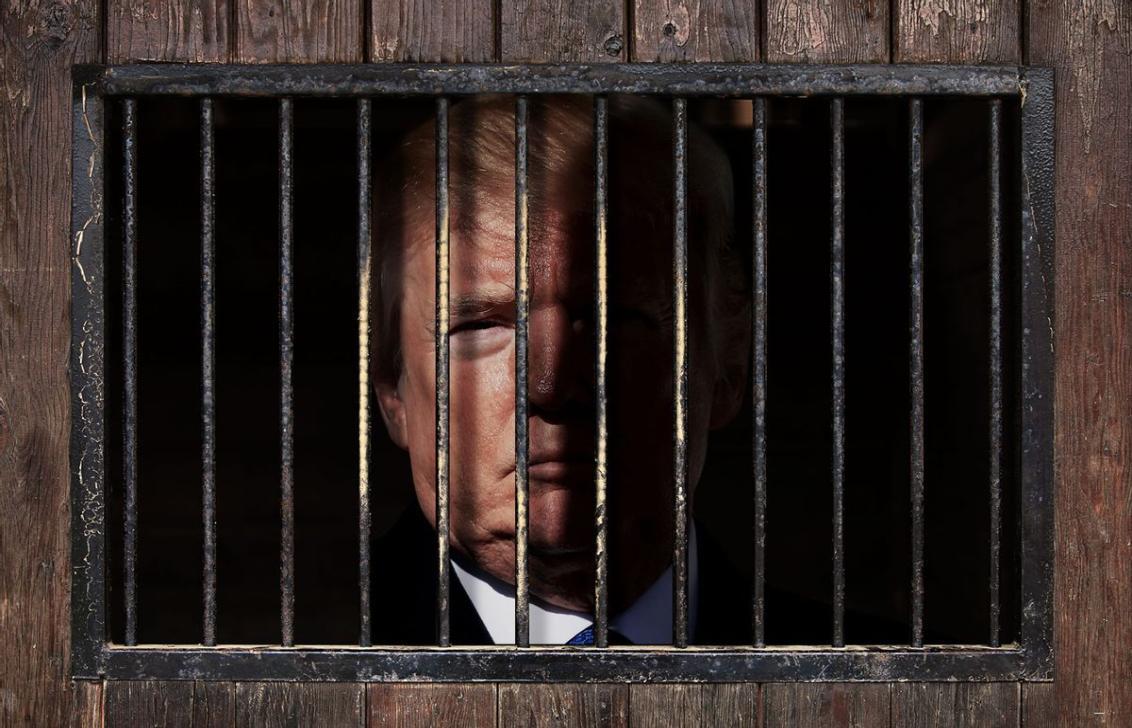




shifting moral standards.



















here was a time when the world spun on an axis of trust. Neighbors watched over one another, doors remained unlocked, and a key placed beneath the welcome mat was a token of faith in both humanity and community. Such days, now remembered with bittersweet nostalgia, have faded into the blurry past. Today, caution and vigilance are the passwords to daily living, as the world outside one s doorstep feels less certain, less secure.



The Shifting Sands of Trust



















Once, in the Southern states and beyond, people lived with the quiet assurance that what belonged to them would remain undisturbed. The act of leaving a key outside spoke of a confidence in the decency of strangers a confidence that, for many, has been worn thin by the passage of time and the persistent whisper of temptation. Now, the sight of bolted locks and barred windows is more common than the casual hospitality of open doors.


Temptation and the Loss of Innocence




























































As the world has grown more complex, so too have the temptations that lurk within it. The metaphor of Satan has no shame echoes through daily life, a reminder that the forces of wrongdoing adapt and intensify, exploiting the vulnerabilities of even the most trusting souls. The once simple dichotomy between good and evil seems muddied by rationalizations and
Consider the congregation that leaves church with songs of praise on their lips, only to return home and fall into discord, anger, or even cruelty. The sanctity of religious ritual competes with the realline between the sacred and the profane blurs. The notion that evil respects no boundaries be it the walls of a home or the pews of a sanctuary is a sobering one.



Morality in the Public Sphere











The same erosion of trust and virtue is visible in the realms of politics and public service. Where once candidates might have run for office with ideals of service, compassion, and Christian charity, too often today the motivation appears self serving. The pursuit of







power for its own sake, rather than for the betterment of the community, has left many disillusioned. Can one truly serve with a clear conscience when the guiding star has shifted from selflessness to personal gain?



Crime, Desperation, and Human Condition



























The story of two thieves one embittered by the paltry contents of a stolen purse, the other indifferent to the very notion of right and wrong highlights another dimension of our changing world. There is a tragic irony in stealing from someone who has already given their last to charity. It s an act that wounds twice: once through the loss, and again through the betrayal of shared values. This snapshot of desperation and callousness reveals the breadth of human response to hardship some justify wrongdoing out of perceived necessity, others embrace it for its own sake.













Though the world may feel darker and more elusive trust, the struggle between virtue and temptation endures. To say that Satan has no shame is to acknowledge that the challenges we face are neither new nor insurmountable. Each act of kindness, each moment of integrity, reclaims a measure of trust that once seemed so abundant.









The question remains: will we let cynicism define our age, or will we strive to restore the fragile bonds that knit us together? The answer lies in the choices made behind every locked door and in every open heart.



ife, in its intricate dance of wonder and complexity, swirls around us like a grand mosaic whose patterns reveal themselves only in moments of quiet contemplation. Each daybreak, each sigh, every pulse within us is the echo of a higher symphony, composed not by random chance but by a benevolent Conductor whose wisdom outshines our own understanding. To behold ourselves not as mere products of biology, nor as accidents swept ashore by the tides of time, but as cherished expressions of an ancient and loving intent is to see life in its truest, most radiant light. Our existence is no afterthought; it is a deliberate note in an eternal melody, reverberating with significance.
To live with such awareness is to find gratitude blooming in the soil of our hearts. Thankfulness becomes not a burdensome duty, but a reflexive turning to the Source from which our gifts and our very breath are drawn. In humility, we acknowledge that our talents, our insights, even the mysterious longings that stir our souls, are gifts entrusted to us. They are not ours by merit of striving alone, but are tokens of grace bestowed by the One who knows us before we know ourselves. The wise lift their gaze skyward, surrendering pride and scarcity, offering praise to the Author of existence whose purposes are painted in hues of mercy and intention.
Yet, the path of life is rarely solitary. The design of our days is generous with encounters some familiar, others fleeting. Who is to say that the stranger we pass on the street, the friend whose laughter brightens a cloudy morning, or the gentle hand that steadies us in crisis, is not an unwitting messenger? In the quiet choreography of destiny, every meeting is charged with the possibility of blessing or guidance. Sometimes, the profound-
est truths arrive on the lips of those we least expect, and wisdom is whispered in a voice softer than our own doubts.
Sacred writings, handed down through generations, become lanterns for our journey. Their words are not relics but living guideposts, illuminating the path ahead, urging us to discern the gentle nudge or the stern warning. To listen for the soft, persistent voice of the Divine prompting us to move, to linger,

culation. In that letting-go, assurance arises we are shielded, led, and loved in ways we cannot fathom. The anxieties that once clouded our striving are gently lifted, replaced by the calm conviction that the path is overseen by eyes that see the labyrinth whole. Even in the tumult, in the valleys and shadows, we are never forsaken; if the Creator walks beside us, what threat can unseat our hope?
The world abounds with snares and entanglements, yet for every challenge there is an avenue of escape, a testimony to the fidelity of the One who watches over us. Our calling is not only to receive, but to serve to let our lives reflect the love and purpose that animates all creation. With open hands and surrendered spirits, we move through life ready to obey, to receive, to give. Joy flows not from selfmastery, but from walking in cadence with the Divine will, discovering meaning in every step and fulfillment in every act of surrender.
walk with a posture of trust. For what comfort can be greater than knowing our days are not a scatter of random
hand both mysterious and kind? The
Success, then, is not measured by worldly standards but by faithfulness. To follow the call of the Good Shepherd is to trust that even when we stray or stumble, we are never abandoned. The Shepherd walks with the flock through every danger, guards against unseen threats, and draws us back into safety when we wander. Even in the valley of shadows, with fear pressing close, we remember: the rod and staff are our comfort, and the promise of protection is unshakable.
We find, in the search for purpose, the s course to a wisdom beyond cal-

Let us trust in this care. The path ahead may twist and darken, but with every step, we are known, cherished, and guided our lives a testament to the Shepherd’s faithfulness, our hearts attuned to the music of His purpose. For in yielding to the design set before us, we awaken to the most profound joy: that of walking, each day, hand in hand with the Divine.

and safeguard individual liberties.







Key Themes and Debates







Several critical debates shaped the Constitution:






he United States Constitution, adopted in 1787 and ratified in 1788, serves as the supreme law of the United States. It is a masterpiece of political theory and practical governance, laying the foundation for the nation's democratic system and defining the structure, powers, and responsibilities of the federal government.

Historical Context








Article I: Establishes the legislative branch, detailing the structure and powers of Congress.





Article II: Defines the executive branch, outlining the powers and duties of the President.









Representation: The issue of representation led to the Connecticut Compromise, which set up bicameral legislature. The Senate would provide equal representation for states, while the House of Representatives would base representation on population.




Article III: Creates the judicial branch, notably the Supreme Court, and proves the judiciary's role.



Article IV: Addresses the relations between states and the federal government.

















The drafting of the United States Constitution was needed by the weaknesses of the Articles of Confederation, the nation s first governing document. The Articles, adopted in 1777 during the Revolutionary War, lacked provisions for a strong central government, which led to issues such as ineffective governance, financial instability, and interstate conflicts. In response to these challenges, delegates met at the Constitutional Convention in Philadelphia in May 1787 with the aim of designing a new, more robust framework of government.

The Framers and the Convention







Article V: Provides the process for amending the Constitution.



Slavery: Although controversial and morally fraught, the Constitution included compromises on slavery, such as the Three Fifths Compromise, which counted enslaved individuals as three fifths of a person for representation and taxation purposes.







Article VI: Declares the Constitution as the supreme law of the land and includes the oath of office for government officials.








The Powers of Government: Delegates worked to define the separation of powers among the legislative, executive, and judicial branches to prevent tyranny and ensure checks and balances.

Article VII: Describes the ratification process.


The Amendments



Structure of the Constitution










The Constitution is composed of a preamble, seven articles, and twenty seven amendments.






The Preamble



















The Constitutional Convention brought together fifty five delegates, including prominent figures such as George Washington, James Madison, Benjamin Franklin, and Alexander Hamilton. These individuals, often referred to as the Framers, deliberated over the course of four months, negotiating compromises and crafting a document that would balance federal authority with state sovereignty
The preamble outlines the goals and principles of the Constitution, beginning with the iconic phrase, "We the People." These words emphasize that sovereignty lives with the citizens, not a monarch.


The Articles



The seven articles detail the framework of government:


The amendments allow the Constitution to adapt to changing societal needs. The first ten amendments, known collectively as the Bill of Rights, were ratified in 1791 and guarantee fundamental freedoms such as speech, religion, and due process. Later amendments address issues like voting rights, civil rights, and the structure of government.


Checks and Balances











One of the Constitution s most innovative features is the system of checks and balances. This design ensures that no single branch of government becomes too powerful. Examples include Continue on page 39



Continued from page 38



Global Influence


Congress’s ability to impeach the President.






The President’s veto power over congressional legislation.




The judiciary’s authority declared laws unconstitutional.

Impact and Legacy

The Constitution has profound influences both domestically and globally. It has been a model for other nations drafting their own constitutions and serves as a testament to the enduring principles of democracy, liberty, and justice.


Domestic Influence


Within the United States, the Constitution has provided a stable framework for governance for over two centuries. It has been evaluated by crises such as the Civil War, the Great Depression, and the Civil Rights Movement, but its adaptability and resilience have allowed it to endure.


Internationally, the United States Constitution is admired as a pioneering document of modern democracy. Its principles have inspired constitutional frameworks in countries around the world, promoting ideals of representative government and the rule of law.


Modern Relevance




Conclusion




The Constitution continues to be a living document, interpreted by the courts to address contemporary issues. Debates over the scope of its provisions, such as the Second Amendment s right to bear arms or the Fourteenth Amendment s guarantee of equal protection, prove its ongoing significance in American life.


The United States Constitution stands as a remarkable achievement, being the aspirations of a fledgling nation for a government that balances authority with liberty. Its enduring principles have guided the United States through periods of challenge and change, solidifying its place as a cornerstone of democracy and governance.



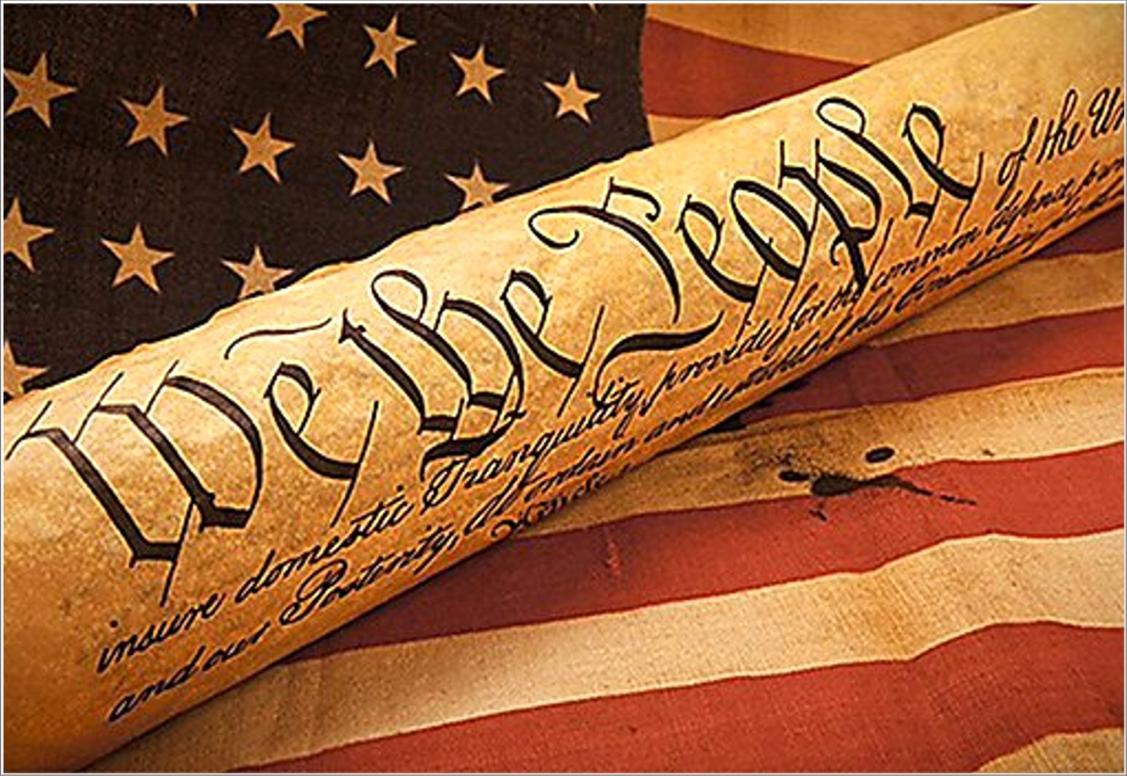










uring Donald J. Trump’s presidenc , policies and sociopolitical actions had a notable impact on minorities, particularly Black communities. Although earlier administrations improved minority status, progress often lagged that of white Americans. Black Americans advanced more under Democratic administrations, with Republican support for minority initiatives typically being less robust.


Americans were expected to give unquestioningly to authority.



Educational and Cultural Suppression





trast between the two parties' approaches to minority support stays stark.



The Looming Threat of Middle Eastern Conflict











The Initial Impact of Trump's Presidency














From the outset of his first term, it became clear that President Trump would implement policies that would disadvantage minority communities. He explicitly showed that Black Americans would be excluded from his political strategies and trickery. This exclusion was further manifested during his second term, where he implemented measures that severely curtailed essential services and support systems for Black communities. Cuts to food allowances, Social Security benefits, medical allowances, and Medicaid insurance disproportionately affected minorities and worsened existing inequalities.

Undermining Judicial Integrity










Apart from direct policy impacts, Trump's administration took actions that tarnished the integrity of the Supreme Court. His influence swayed judicial decisions, pushing them towards regressive actions that harkened back to the dark days of slavery. This erosion of judicial independence threatened to reverse decades of progress and reinstated a premise where Black




Trump's administration also targeted educational and cultural avenues, pulling Black books from shelves and limiting access to historical knowledge. This suppression of Black history aimed to erase the painful memories of yesterday, thereby hindering the prospects for a better tomorrow. Such actions deprived young Black Americans of the opportunity to un-



derstand their heritage and the struggles endured by their ancestors.




Critical Reflections on Democratic Support



















As Trump's administration continues to navigate the complex geopolitical landscape, Black communities hold their breath, expecting the impact of Middle Eastern combat. Historically, wars have generated revenue that could temporarily satisfy financial needs, yet the human cost stays high. The tragic return of deceased soldiers in coffins underscores the deep emotional and societal scars left by conflict. The pressing question arises: Are these political games worth the lives lost and the suffering endured?


Philosophical Reflections







During these political upheavals, a profound philosophical question appears: What does it profit a man to gain the entire world and lose his soul? This biblical inquiry resonates deeply within the context of contemporary political maneuvers, challenging the ethical and moral foundations of governance.

In a retrospective analysis, it has been noted that Democratic administrations did not entirely fulfill their promises to Black communities. While they provided small paying jobs, often termed patronage jobs, these were insufficient in delivering substantial economic progress. Despite these shortcomings, the con-



The presidency of Donald J. Trump has undeniably left a lasting impact on minorities at large. The policies and actions undertaken during his tenure have not only fostered economic hardship but also undermined the cultural and educational foundations necessary for long term societal progress. As the nation moves forward, it is crucial to critically assess these developments and strive towards a more inclusive and fair future for all Americans.




Rev. Dr. Harold E. Bailey, President Probation Challenge PCC Network


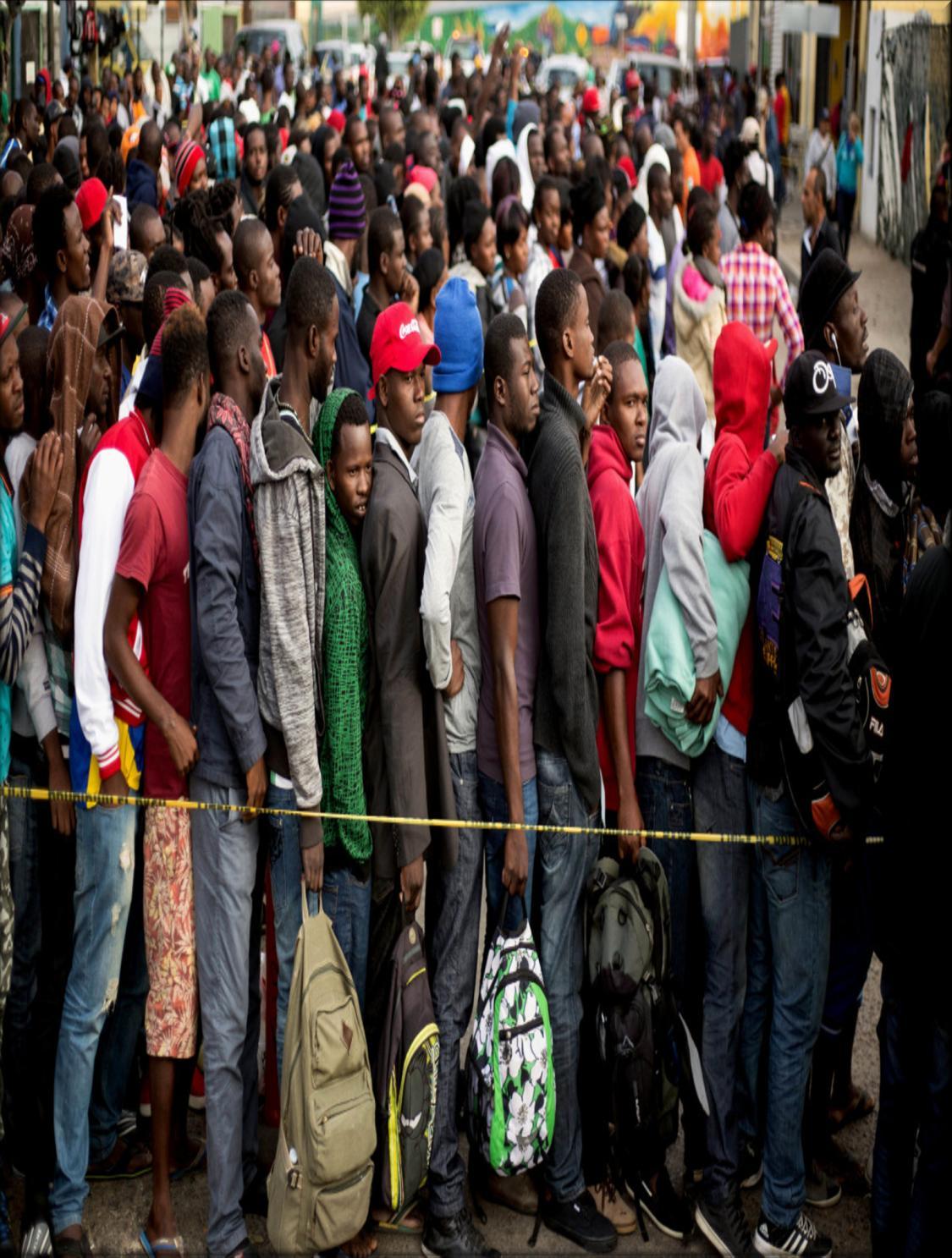















n the vast expanse of human existence, the interplay between good and evil has been a recurring theme, one that shapes our decisions and defines who we are. This duality becomes especially pronounced when considering those who hold seats of authority, particularly in positions like the highest office in the land, such as the White House.









For leaders, the spirit that governs their decisions has a profound impact, not just on their personal journey but on the lives of millions who are affected by their choices.

The Nature of the Spirit

















Every human is endowed with a spirit an intangible lifeforce that serves as the source of morality, intention, and action. This spirit is continually called upon to make critical decisions, to discern what is good and what is evil. For leaders, this responsibility is magnified. In the realm of politics, the decisions made are not solitary but reverberate through society, influencing laws, shaping cultures, and altering destinies.
















Yet, how does one truly know the spirit of another, particularly someone in authority? The notion of discernment becomes paramount. Guidance from spiritual teachings, such as the words of Christ, reminds us that "ye shall know them by the fruit they bear." This metaphor resonates deeply it suggests that the actions of a person, much like the fruit of a tree, are an unmistakable reflection of their inner nature.




























n apple tree will not bear figs, for it is against the laws of nature. Similarly, a person s character and spirit cannot produce results that are incongruent with their essence. This principle underscores the importance of observing a leader's choices, policies, and behaviors. Are they rooted in compassion, justice, and the greater good? Or are they tainted by selfishness, malice, and disregard for others? The fruits of their actions will reveal the truth with clarity.












As individuals, we must take responsibility for recognizing and understanding these fruits. The ills of society are often attributed to ignorance or misinformation, but humanity cannot indefinitely blame external forces. Each person has the capacity and the obligation to consciously evaluate the moral compass of those in authority.


The Eternal Implications













At its core, this reflection extends beyond leadership and politics. It speaks to the universal human condition and the ultimate question of eternity. The choices we make are not merely temporal; they hold weight in the grander scheme of existence. Every decision, every action, every fruit borne by our spirit contributes to the legacy we leave behind and the path we carve for our eternal journey.


Humanity, therefore, faces a profound challenge: to act with awareness, to align the spirit with what is good, Continue on page 43.






Continued from page 42.




and to hold accountable those who lead. The decision of where one spends eternity a concept deeply rooted in spiritual belief is shaped by the cumulative decisions made throughout life. It is a conscious choice, dictated by the spirit within.





Conclusion


As we navigate through life, it becomes imperative to cultivate a spirit that seeks what is good, to recognize

ama Loudella Evans Reid served and led the GMAC Mass Choir Rushing across a church altar, fist shaking, hammering home notes, index finger pointed toward the sky, it was as if Lou Della Evans Reid was physically dragging the spirit of the Lord from her choir.
Ms. Evans Reid, longtime choir director of Fellowship Missionary Baptist Church on the South Side, was a legend in the gospel community.
She and her brother, the Rev. Clay Evans, who died in 2019, were co-founders of the church, which was opened in 1950 and became a destination for the country’s top gospel singers and other musicians.
“It was a really big, rich, robust harmonic style of gospel singing,” said gospel music broadcaster Bob Marovich. “She was this diminutive person, under five feet tall, in front of this big choir, and she’s jumping and shaking her fist ... Other musicians, if they wanted musical nourishment, they would go there. It was that powerful.
“To watch her perform was an event itself,” Marovich said. “She was a very physical choir director, and then she’d turn around and direct the audience, too.”
Chicago is considered to be the birthplace of modern gospel, and Ms. Evans Reid was one of the few surviving members of the pioneering generation of gospel greats that solidified the city’s place in the genre.
She was diagnosed with pancreatic cancer this spring and had been receiving hospice care at her South Side home.
Ms. Evans Reid died Saturday. She was 94.
An early 95th birthday celebration in May at
the fruits of those in positions of power, and to hold ourselves accountable for the choices we make. Leadership, whether personal or political, reflects the spirit that governs it. And as the teachings remind us, the fruit will always reveal the essence of the tree.

In this way, the journey of humanity is both personal and collective, a shared responsibility to strive for a world that reflects the highest aspirations of the human spirit.



the Bridgeport Arts Center was attended by hundreds, including Mayor Brandon Johnson.
After the event, WFLD-Fox 32 ran a retrospective on her life and asked Ms. Evans Reid what she wanted the world to remember about her. She responded, “I gave it all I had. I want to lift up God, build up God. I ain’t trying to build my name up but build God’s name up. If you take care of God,
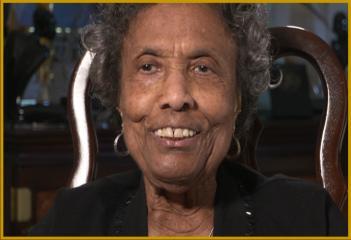




”
he’ll take care of you.
She was also a civil rights leader alongside her brother.
The siblings welcomed Martin Luther King, Jr. to their church when he visited Chicago in the ’60s.
Their alliance with King irked city leaders and resulted in many delays in the permitting process to build a new church, said Marovich. It ultimately took seven years to complete the project at 4543 S. Princeton Ave.
The church gained national prominence by broadcasting services on radio and television. The Rev. Jesse Jackson was ordained there.
Ms. Evans Reid also had a long career as a surgical nurse and worked at sev-
eral Chicago hospitals.
In addition to directing the choir at Fellowship Missionary Baptist Church, she worked with several other Chicago choirs, and was well known for serving as music coordinator of Gospel Music According to Chicago.
She always strove to ensure the legacy of the traditional gospel sound she and the early generation of gospel fans loved.
“A highlight of her catalog was when she directed her choir in singing ‘It Is Well With My Soul’ ... it never fails to bring tears to people’s eye,” Marovich said.
Ms. Evans Reid was born July 7, 1930, in Brownsville, Tennessee, to Henry Clay and Estanauly Evans, according to The HistoryMakers, a non-profit that seeks to preserve the history of significant African Americans.
She grew up in a large family that loved to sing.
“She was known as Mama Lou, and she had this toughness about her, you knew Mama Lou loved you, but she was going to make sure that her choir sounded the best it could, and she’d get the best out of you,” Marovich said.
A collection of church programs, newsletters, audiovisual materials, photographs and other memorabilia pertaining to Ms. Evans Reid is archived with the Chicago Public Library.
Rerun: By Mitch Dudek, Chicago Sun Times.














n the heart of Greenville, South Carolina, a stirring has taken place that transcends the boundaries of ordinary ministry. Pastor Lottie Woods Hall, a visionary leader at The Intercessory Health and Healing Center, has embarked upon a journey marked not only by obedience to the divine prompting but also by a profound commitment to the upliftment of both youth and elders within her community. This new project, still unwrapped from the silence and secrecy it was originally conceived in, stands as a testament to a faith that listens, waits, and moves only at the guiding of the Spirit.

The Divine Prompting



giving









The first fruits of this vision manifested not in a grand announcement, but in a small and intimate gathering. The air was thick with anticipation, but the mood was gentle quaint, as if each attendee were stepping into a sacred mo-
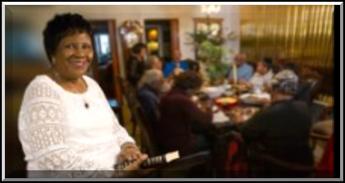















As the worship subsided, Pastor Hall rose to speak. Her words were measured, her tone gentle yet charged with the authority of someone carrying a message greater than themselves. She spoke of her calling to address the mentalities” of youth and elders those deepseated beliefs, attitudes, and patterns of thinking that shape destinies and define communities.


















Pastor Hall s ministry has long been known in the Upstate for its passion for healing spiritual, physical, and emotional. Yet, in recent times, a quiet restlessness settled over her heart. As she sought guidance in prayer, a vision began to crystallize: a project that would bridge generations by addressing the educational needs and spiritual mentalities of the young and the old alike.








ment that transcended time. Here, in this warm circle, the focus was not on the coordination of a new program or the practicalities of organization; it was on pure worship and the unburdening of grateful hearts.



Evangelist Cathy Gray, herself a woman of deep faith and vibrant praise, was called upon to open the gathering. Her voice, rich and evocm







































She described a world where the wisdom of elders so often goes untapped, and where the passions and dreams of youth are sometimes dismissed or misunderstood. Her vision was one of dialogue, of workshops and forums where generations could come together elders sharing hard won wisdom, youth bringing fresh perspectives, and both learning anew from the Word of God.













































Thank You Lord, a song that has echoed in sanctuaries for generations. The melody became a tapestry, weaving together the varied experiences and testimonies of the people present. One by one, the congregation, drawn from all levels of society lifted their voices in harmony, their gratitude swelling into a chorus that reached heaven itself.












But unlike many who would rush forward with such inspiration, Pastor Hall s response was one of reverent restraint. Not a word was uttered or even a whisper, recounts one confidant, until she was given permission from the spirit of God. It was only then, with assurance and humility, that Pastor Hall began to gather those closest to her trusted family, friends, and long time associates in preparation for what would soon be revealed as a work not of her own ambition, but of divine commission.

A Gathering Conceived in Thanks-

This would not be a standard educational program, Pastor Hall insisted. It would be an incubator for transformation, rooted in prayer and guided by spiritual discernment. There would be sessions on biblical principles, practical life skills, mental health, and intercessory prayer. Elders would serve as mentors, while youth would be encouraged to lead in areas of technology, outreach, and creative expression.

Faithful Preparation and Quiet Beginnings





It was not lost on anyone that this was the true foundation of the new project: a people united in thanksgiving, preparing the ground for seeds of learning and healing to be sown.


The Vision Unfolds: Bridging Gener-





The days and weeks that followed were marked by careful, prayerful planning. Pastor Hall worked closely with core associates, each step measured and brought before God in intercession. They mapped out sessions designed to meet the Continue on page 45.








Continued from page 44.
unique needs of their community: forums on generational trauma and healing, discussions on purpose and calling, and workshops exploring identity in Christ.
All the while, Pastor Hall remained faithful to her first guiding principle nothing would be revealed or implemented without divine confirmation. “We are not just planning an event,” she would tell her team, “but preparing a space for God to move, to heal, and to restore.”
Worship as Foundation
At the center of every step was worship. Each planning session began and ended in song and prayer, echoing the first gathering’s spirit of thanksgiving. It became clear that gratitude was not simply an attitude, but a weapon and a shield a way to remain focused on the presence of God amidst the challenges of organizing and launching a new initiative.
Evangelist Gray’s opening anthem of “Thank You Lord” became an unofficial theme, the refrain returning in moments of discouragement and uncertainty. The choir of voices sometimes a handful, sometimes swelling to dozens became a symbol of unity and hope.
As word of the project will spread beyond the walls of




oung boys and girls, heed the gentle wisdom of your parents for their words are spun from care, experience, and love, and their guidance may one day be what saves you from sorrow. Each day, news stories from across the United States paint a somber picture: children missing, lost to tragedy, or taken too soon. The pain is almost unimaginable, yet it is real for those left behind. To lose a child, a sibling, or a friend is to lose a piece of oneself, a void that echoes throughout the years.

It is just as true, though, for the passing of a beloved parent. Whether they lived the fullness of their days or their journey ended sooner than expected, letting go is never easy. The ache of their absence lingers, a quiet longing for their laughter, their counsel, or the warmth of their embrace.



The Intercessory Healing and Health Center, parents are bound to express hope that their children will find guidance and mentorship. Elders, some of whom had felt sidelined in a rapidly changing world, will find a renewed purpose in the opportunity to teach and encourage.
The broader Greenville community now watches with interest as Pastor Hall’s vision has taken shape. Other pastors are expected to reach out while looking to collaborate or learn from the model being developed.
Looking to the Future
And yet, Pastor Hall is still steadfast in her resolve that this journey is just beginning. “The needs of our youth and elders are great, but our God is greater,” she reminds those gathered. As the project unfolds she continues to seek the lead of the Spirit, trusting that what began in humility and thanksgiving will blossom into transformation for individuals, families, and the entire community.
Her story, and that of her team, is one of patience, obedience, and unwavering faith a reminder that when a community listens for “What Thus Saith the Lord,” miracles unfold, not in the noise of selfpromotion, but in the quiet power of gratitude and the shared pursuit of healing and wholeness.
By Paul Eugene Bailey.


gift. Let us love as if each day were the last because sometimes, it is. In loving deeply and living gratefully, we honor those we have lost and those we are blessed still to have beside us.





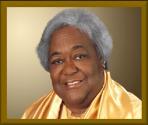

Life, fragile and precious, is composed of moments swiftly passing. We are not promised tomorrow. Thus, let us remember whether we are young or old, parents or children to cherish one another fiercely. Speak your love aloud, forgive quickly, and be available for tenderness. Celebrate the everyday joys of togetherness and hold your loved ones close, for the chance to do so is a




As the Lord came for others, in doing so, we were taught to love one another and to aid where there was need. The two photos reflect women of God who gave their lives for others.





Pictured above is the late Mother Lillian Bailey, mother of the Rev. Harold Bailey, president of the Probation Challenge program. Mother Bailey was called Mother Bailey by the program s clients. The students also honored the late Mother (Evangelist) Christine Moore because she did not speak only the language of an evangelist, but she generously contributed her finances to help keep the program open.








These two women of God demonstrated the love of God while in the land of the living.
These dedicated women inspired young people to understand God's love and motivated them to share it many did.




Divine Commands, Human Du-



Responsibility and Consequence
















rom the very first pages of sacred scripture, the word of God emerges as the axis around which faithful living revolves. Before the Christian church was ever established as an institution, the divine command served as the core compass for humanity s moral and spiritual journey. In these early accounts, the word is not abstract; it is a direct, purposeful declaration that shapes destinies and relationships.

The Law in Eden: Divine Command and Human Role


















The aftermath of this choice is not merely punitive, but formative. God s response establishes both the dignity of human work and the









The Pattern of God s Word: Directive, Consequence, and Hope























Across these foundational chapters, a pattern emerges. God s word provides clear directives, articulates consequences, and through the unfolding narrative hints at hope. Even as Adam and Eve leave Eden, God s continuing presence and the promise of future restoration are implied. This pattern is not confined to Eden; throughout scripture, God s word calls people to faithful obedience, confronts them with the consequences of their choices, and extends the possibility of redemption and grace.

The Enduring Authority for Believ-

ers










The Genesis narrative introduces Adam, the first human, as the recipient of a singular, poignant law: he is not to eat from the tree of the knowledge of good and evil. This law is not merely a rule it is a symbol of trust, innocence, and the boundary that preserves the harmony between Creator and creation. Eve, Adam s companion, shares in this call to obedience. In their shared mandate, the responsibility to heed God s word falls upon both, but scripture singles out Adam as the initial recipient and, therefore, the one ultimately accountable.





reality of hardship. Adam learns he must now toil to produce food: "by the sweat of your brow you will eat your bread." This decree not only introduces toil as a reality but also affirms the honor of work. The later scriptural phrase, if anyone is not willing to work, let them not eat,” highlights that work is essential to human dignity and society.















Temptation enters the scene through the cunning of the serpent, whose words lead Eve to question and ultimately transgress the command. Adam, too, chooses to eat. In this act, the first humans move from innocence to the knowledge of good and evil, and the pattern of humanity s struggle with obedience is set.











For all who seek to live faithfully, the word of God remains an enduring guide. It reminds believers that divine instruction is both a gift and a responsibility. The early chapters of Genesis teach that obedience is not just about following rules, but about responding in trust to the One who speaks. When humanity fails, scripture does not end in judgment; it points forward to hope, to grace, and to the ongoing relationship between God and humankind.













Eve, in turn, hears that her pain in childbirth will increase and that her relationship with Adam will be marked by new challenges. The biblical text does not mention a monthly blood flow from the brain”; rather, it centers the consequences on the realities of childbirth and relational dynamics. These details clarify that scripture s focus is on the lived experiences and responsibilities of individuals in a post Eden world.















Thus, the authority of God s word conveyed through command, consequence, and the promise of hope stands as the unchanging foundation for those who wish to walk the path of faithfulness. In every era, it calls readers to remember their responsibilities and to trust in the grace that God is always ready to provide.



tapestry of beliefs, traditions, and individual choices influences the journey toward forming lasting relationships. The biblical adage, "He that finds a wife finds a good thing" (Proverbs 18:22), has long underscored the value and blessing found in a committed marital union. Yet, as times and circumstances evolve, so too do the questions surrounding love, partnership, personal agency, and the role of faith.
On Purity and Commitment: Biblical Views and Personal Conviction
The decision for a young woman to "save her body until she marries" often stems from a desire to honor personal faith and to live under religious teachings. Throughout the Bible, figures such as Mary, the mother of Jesus, and Ruth are portrayed as examples of fidelity and devotion, not simply to societal expectations, but to their understanding of obedience to God, more than anything else. Such a choice is deeply personal and, for many, a form of spiritual discipline and reverence. It is essential to recognize, however, that a person's past experiences or relationship history do not solely define their value. While some traditions emphasize virginity or celibacy before marriage, the broader biblical message consistently centers on grace, redemption, and the immeasurable worth of every individual as seen through the eyes of God.
Changing Cultural Norms and the Question of Multiple Relationships
In the 21st century, societal views on dating and relationships have undergone significant shifts. Many individuals have multiple relationships before finding a long-term partner, and such experiences can offer valuable insights, foster growth, and lead to a deeper understanding of oneself and
others. While some may question how contemporary practices align with faith traditions, others view these experiences as part of a journey that, with reflection and intention, can still be in harmony with spiritual values.
Desire, Devotion, and Financial Considerations
The Bible includes passages suggesting that a woman’s desire should be

toward her husband (Genesis 3:16), situating marriage within a framework of mutual devotion and partnership. However, the notion that a relationship should be predicated solely on financial provision is more reflective of cultural and economic realities than of biblical mandate.
A healthy relationship, from both spiritual and psychological perspectives, is ideally built on mutual respect, shared values, and emotional connection qualities often encapsulated by the concept of love. While financial stability is essential, reducing a relationship to material gain or provision can undermine the deeper aspects of trust, partnership, and companionship that foster lasting bonds.
On Love, Value, and the Role of Grace
The saying, “What’s love got to do with
it?” reflects a certain cynicism about romance and emotional connection, sometimes born from disappointment or cultural shifts. Yet loving its many forms is still a central theme both in sacred texts and in human experience. The Bible describes love as patient, kind, selfless, and enduring (1 Corinthians 13), and these qualities stay foundational to enduring relationships.
The idea that a person is “spoiled” or less worthy because of their romantic or sexual history is not a biblical teaching rooted in grace or compassion. Rather, many faith traditions emphasize forgiveness, new beginnings, and the inherent dignity of every individual. No one’s value is diminished in the eyes of God because of their past; instead, everyone is invited into a life of purpose, meaning, and hope.
Conclusion: Navigating Faith and Modern Life
Navigating relationships today often means balancing ancient wisdom with the realities of contemporary life. For those who choose to align their actions with faith, the most central principle stays love love for God, for oneself, and for others.
Whether one chooses to wait for marriage out of personal conviction or finds one on a different path, what matters most is honesty, integrity, and compassion with which one walks the journey. Faith can offer guidance but should never be wielded as a measure of someone’s worth.
Personal decisions about relationships deserve respect and understanding.
Healthy partnerships are built on mutual respect, shared values, and genuine affection.
Everyone, regardless of their past, is worthy of love, dignity, and new beginnings.








broader section outlining ritual purity for the Israelite community, covering a wide range of natural bodily functions for both women

Historical and Cultural Context



Understanding Ritual Impurity













uestions about menstruation and its status in religious texts, particularly within the Bible, have echoed through centuries. For many, menstruation has been shrouded in mystery, stigma, and at times, misconceptions about its spiritual or moral significance. In this exploration, we will carefully examine the pertinent biblical passages, their historical and cultural context, and theological perspectives, to discern whether the menstrual period is considered a curse according to the Bible.



Biblical References to Menstruation

The Laws of Leviticus











The primary biblical references to menstruation are found in the Old Testament, especially in the book of Leviticus. Leviticus 15:19 30 outlines regulations regarding women during their monthly period:








Leviticus 15:19: "When a woman has her regular flow of blood, the impurity of her monthly period will last seven days, and anyone who touches her will be unclean till evening."









and men (including nocturnal emissions, skin diseases, and other discharges).

Other References



























The concept of "uncleanness" in Leviticus is often misunderstood. In the ancient Hebrew context, ritual impurity was not equated with sinfulness or moral wrongdoing. Instead, it signified a temporary state affecting one's ability to participate in temple worship and certain communal activities. Many natural bodily functions not just menstruation resulted in ritual impurity. For example, both men and women could be rendered unclean by bodily discharges, and even childbirth brought temporary impurity.

Purpose of Purity Laws



The purity laws served practical, social, and theological purposes:



They promoted hygiene and community health.



They set Israel apart from surrounding nations, reinforcing identity and distinctiveness.






They symbolized humanity's need for God's holiness and the reality of life's cycles of birth, death, and renewal.



































Leviticus 15:20 24: Details on ritm coming in contact with a menstruating woman.






Additional references can be found in:





No Condemnation or Curse Explicitly Stated






Leviticus 15:28 30: After her period ends, a woman must bring two turtledoves or pigeons as a purification offering before she is considered ritually clean again.


These passages are part of a



Leviticus 18:19 and Leviticus 20:18: Prohibiting sexual relations during a woman s menstrual period.







Ezekiel 18:6 and 36:17: Using menstruation as a metaphor for impurity or uncleanness, but not as a moral failing or curse.












In examining the biblical text, it is clear that the state of being "unclean" due to menstruation is not labeled as a curse or punishment. It is a matter of fact acknowledgment of a natural process, one among many that bring ritual impurity in the ancient system. Continue on page 49.





Continued from page 48.

Is Menstruation a Biblical Curse?


The Genesis Account




Some readers point to Genesis 3:16, where God addresses Eve after the fall:






"To the woman he said, 'I will make your pains in childbearing very severe; with painful labor you will give birth to children...'"






This verse references pain in childbirth as a consequence of the Fall, but it does not mention menstruation. While menstruation is linked biologically to the reproductive cycle, it is not singled out as a curse in the Genesis account.

No Biblical Evidence of MenstruC




ous flow of blood for twelve years. According to the Law, she would have been in a perpetual state of ritual impurity.



Affirming Dignity and Value









Yet, Jesus responds to her with compassion, not condemnation. He neither rebukes nor shames her for her condition. Instead, he praises her faith and restores her to health and community, demonstrating a new way of relating to those considered "unclean" under Old Testament law. This incident reflects a shift in emphasis from ritual purity to personal wholeness and faith.


The New Covenant and Ritual Law














Modern Christian teaching emphasizes the inherent dignity and worth of all people, regardless of gender or bodily functions. The menstrual cycle, far from being something shameful or cursed, is a vital part of human reproduction and health.


Addressing Stigma and Misconceptions


























Neither the Old nor New Testament ever uses the term "curse" in connection with menstruation. The laws of Leviticus and other references treat menstruation as a normal part of human physiology. The requirements for separation and purification reflect ancient ritual practices, not a statement of moral or spiritual inferiority.


Jesus and the New Testament Perspective


The Woman with the Issue of Blood












The early Christian community, as reflected in the New Testament letters, did not continue the ritual purity laws of the Old Testament. Paul, in particular, emphasized that in Christ, believers are freed from the ceremonial requirements of the Law (see Galatians 3:23 25, Colossians 2:16 23). The focus was on spiritual transformation rather than ritual observance.


Contemporary Theological Perspectives


Menstruation as a Natural Process










A notable New Testament account is found in the Gospels (Mark 5:2534, Matthew 9:20 22, Luke 8:4348), where Jesus heals a woman who had suffered from a continu-




Most contemporary Christian theologians and biblical scholars affirm that menstruation is not a curse but a natural biological process. The ritual laws of the Old Testament are understood within their historical context, not as moral judgments.
















































Misunderstandings about biblical teachings have unfortunately contributed to stigma around menstrum H w careful reading of Scripture and an understanding of its context dispel the notion of menstruation as a curse. Instead, faith communities are encouraged to value, support, and affirm those who menstruate. After a thorough examination of the biblical text, historical context, and theological reflection, the Bible does not regard menstruation as a curse. The laws of ritual impurity in the Old Testament are part of a specific cultural and religious framework and do not reflect a judgment of inferiority or punishment.



The teachings of Jesus and the broader New Testament affirm compassion, inclusion, and the dignity of every individual.




Thus, menstruation is not a curse, but a natural, God given process integral to human life.








Unraveling the True Price of Society's Choices.




troubling paradox lies at the heart of our socime-






































one in Illinois costs around $22,000 annually, which is comparable to or even more than what it costs to educate a student in Chicago. However, examining how taxpayer dollars are allocated reveals a concerning pattern that warrants careful analysis, reflection, and ultimately, accountability.

Where Does the Money Go?








prevention; it is hope and horizon. Yet, history shows us that decisionmakers have often chosen the path of immediate control over long term enlightenment, feeding the socalled Incarceration Industry with unchecked funds and little public scrutiny.














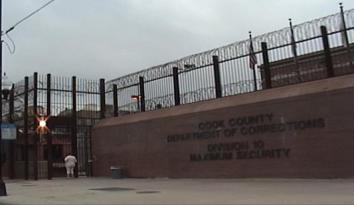











It is a question as old as taxation itself: Where does the taxpayer's money honestly go? The expenses of incarceration extend beyond a bed and three meals; they encompass layers of administration, maintenance, security, and a system designed for containment, not correction. Meanwhile, public education often the birthplace of opportunity, critical thinking, and personal growth wrestles with budget shortfalls, overcrowded classrooms, and underpaid educators. The contrast is not merely financial, but philosophical.




The Legacy of Untold Chapters





An Investment in Futures For Better or Worse








If the same resources lavished upon the carceral system were instead invested in robust, equitable education, the argument goes, the cycle of incarceration would be broken before it began. Education is




There are shadows cast by the nation's past, by the era of slavery, by the long, dark night of Jim Crow, and by a justice system that has been, for many, an instrument of oppression rather than rehabilitation. The narrative, as you suggest, is not new; only the actors and the scenery have changed. The overrepresentation of Black citizens


in prisons echoes the forced labor and subjugation of previous centuries, sustaining a system that profits from the bodies it confines.



Education as Liberation








City Hall must remember that to be educated is to be empowered, to possess the tools to see through deception and demand justice. If a society truly values the potential of its people, it invests in their minds, not their imprisonment. The continued preference for incarceration over education, for silence over reform, risks perpetuating a cycle where certain communities are systematically disadvantaged and misunderstood.



What Will It Take?









What, then, will it take to shift the narrative? Courage, transparency, and a collective will to reimagine public investment, not to punish, but as a pathway to cultivate, uplift, and empower. We must ask ourselves whether the persistence of these inequities is accidental or intentional, and whether we are content to let history repeat itself under new guises.




The cost of incarceration is not only a line item in the state s budget; it is a measure of our priorities and our compassion.






To break the cycle, we must invest in education as the key to freedom, dignity, and the actual realization of equality.






Tname child of God.















o love God is to obey Him. This fundamental truth is at the heart of Christian discipleship, observed through the actions and words of devoted followers whose lives radiate the love they have received. We learn not only from what these individuals say, but from the consistency of their actions a living testimony that shapes the faith of those around them, especially the young.

The Weight of Influence







For young believers, the challenge is twofold: to discern actual fruit in others and to cultivate such fruit in their own lives. This is not achieved solely through imitation, but through instruction, mentorship, and a personal relationship with Christ. Without the guidance of mature, trained believers, youth struggle to learn the path of righteousness. The absence of sound teaching leaves them vulnerable to confusion within the church, and to the myriad temptations outside it.
Reality Facing Our Youth



Children and adolescents are impressionable, watching those they admire for cues on how to navigate faith and life. As the next generation grows, they search for someone to follow, imitating what they see and hear. If the models before them falter, or if their witness is tainted by hypocrisy, confusion and doubt may take root. Today, the voices of ministers and leaders sometimes ring with questionable tones, casting shadows over the integrity of their message. Such inconsistencies remind us that every Christian, particularly those in positions of influence, must carefully guard both speech and conduct.

Scriptural Standards: Fruit as Evidence



























In today s world, the movie version” of life often glamorizes rebellion or distorts righteousness. When authentic models of holiness are lacking, young people may look elsewhere, frequently to the street leaders” who rule by intimidation rather than love. While many youths shun the company of those known for violence or criminality, coercion and threats can drag even the unwilling astray. The real risks here are grave: the loss of innocence, encounters with violence, or even the dangers of death and hospitalization.


tion, recognizing that new dangers emerge daily, and humbly acknowledging the limits of one s knowledge. The safety and spiritual growth of the young cannot be left to chance or assumed to be covered by past experiences alone. Instead, ongoing dialogue, mutual learning, and prayerful dependence on God are required.










Hope and Help in Christ Alone






Where, then, is the escape from the violence and confusion that surrounds us? Ultimately, our only refuge is in Jesus Christ. He is the Good Shepherd, the one who rescues, restores, and leads His people out of darkness into light. Through Christ, we are offered not only protection, but transformation—healing from the wounds of the world and the power to live as true sons and daughters of God.






















The question arises: What does the Bible say about adults who profess the gospel but fail to live as true children of God? In Matthew 7:16, Jesus states, You will know them by their fruits.” This passage sets a clear standard—genuine faith and produces visible results. Galatians 5:22 23 describes these fruits” as love, joy, peace, patience, kindness, goodness, faithfulness, gentleness, and self control. Those whose lives are not marked by such qualities, regardless of their titles or claims, risk being found unworthy of the






The threat is not confined to specific neighborhoods or communities; it permeates cities, towns, and rural areas alike. Schools, playgrounds, and even churches are not immune to the insidious influence that seeks to rob, steal, kill, and destroy.” The scriptural warning of John 10:10 rings true there is an enemy who delights in sowing destruction wherever he can.




The Role of Parents and Guardians










The spiritual battle is real, and the forces that seek to destroy our youth are persistent. Yet, we are not left helpless. Christ s Spirit promises to guide us into all truth” (John 16:13), illuminating the path of righteousness and giving wisdom for every challenge. As families, churches, and communities, our collective hope is to point the next generation to this living hope training them to recognize actual spiritual fruit, equipping them to resist evil, and encouraging them to walk in obedience and love.
A Word of Encouragement




Let us, therefore, relax in the embrace of Christ, trusting the Spirit to lead us through the uncertainties of life.

Amid these challenges, the responsibility of parents and guardians is both vital and daunting. Open, loving communication with children is essential, guiding without presump-






May our lives reflect the love, wisdom, and holiness of the One we serve, so that those who watch us especially the young will be inspired to follow Him as well.




By Rev. Dr. Harold E. Bailey.






